See Also
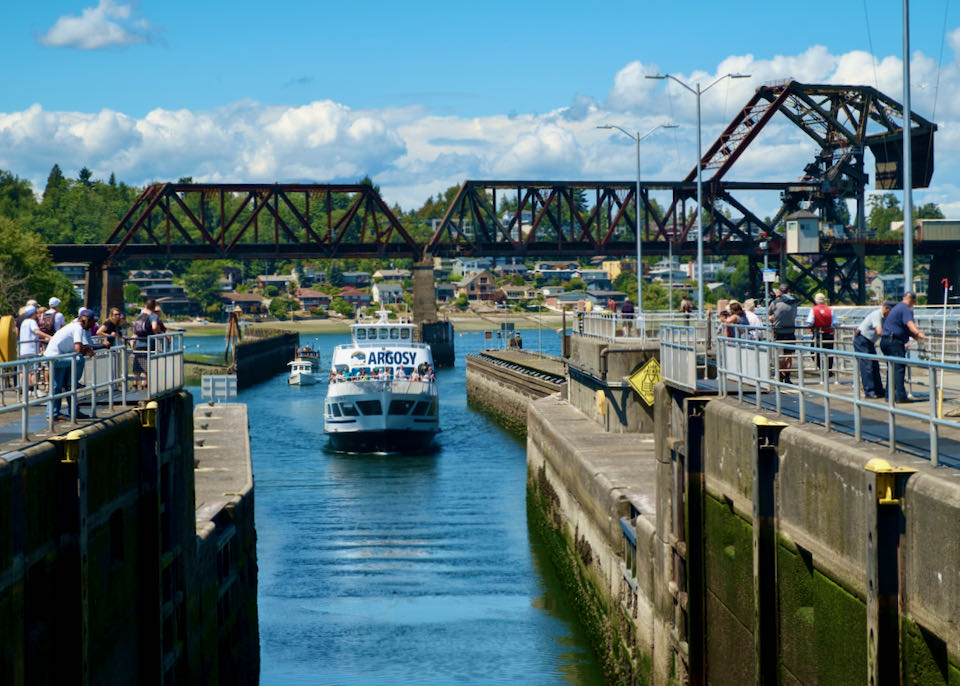
A Seattle Boat Tour is a great introduction to the city for first time visitors.
Recommended Seattle Tour
The Pike Place Market Chef-Guided Food Tour is our favorite tour in downtown Seattle.
- Pike Place Market Chef-Guided Food Tour – Awesome tour of the specialty shops and top restaurants in Pike Place Market and a few surrounding streets.
See Also
- Best Seattle Boat Tours
- Best Seattle Brewery Tours
- Best Seattle Walking Tours
- Best Seattle Underground Tours
- Best Seattle City Tours
- Best Seattle Food Tours
- Best Places to Visit near Seattle
The Best Things to Do in Seattle
1. Elliott Bay Water Taxi from Downtown to West Seattle
There are many options for getting out on the water when you’re in Seattle – you can rent a kayak, take a ferry ride, and there are several day cruises. But if you don’t want to spring for a day trip or paddle your own boat, you can take the short ride across Puget Sound on the Elliott Bay Water Taxi to West Seattle and Alki Beach. It’s easy and fun, the views are gorgeous, and it’s the best deal in town for a quick trip on the water. Combine the boat ride with lunch at Marination and this might be my favorite outdoor activity for a sunny day in Seattle.
The Elliott Bay Water Taxi goes from Pier 50 in downtown Seattle to Seacrest Dock. No need to buy tickets in advance – there are ticket machines on the pier (fare & schedule information). Boats leave every hour and arriving at the dock 10 minutes in advance is nearly always enough to ensure a spot. It’s a passenger ferry only – no cars – but you can take bikes and strollers on board.
It’s only a 15-minute ride, but the views from the Water Taxi of the Seattle skyline are spectacular. Once you’ve arrived in West Seattle, you can board a free shuttle bus that takes you up into the Admiral or Alaska Junction neighborhoods for shopping or snacks.
But most folks stay along the waterfront, walking the promenade or taking the shuttle headed to Alki Beach. In the summer months, you can rent a bicycle (or buggy bikes that seat a family) to ride the paved trail. You’ll have to share the lane with longboards, inline skaters, and razor scooters, but it’s a fun scene.
There are loads of friendly places to eat along Alki, so don’t worry about bringing treats with you. Marination Ma Kai – right at the Water Taxi pier as you disembark on the West Seattle side – has fish and chips and sliders (and a full bar) or, you can head to Cactus for modern Mexican cuisine. There are lots of places in between – there’s pho (Vietnamese noodle soup) and Thai and even if you’re not going there to eat, you should take a peek inside Spud (more fish and chips, there are several places along the strip) where there are photos from the time when Alki Beach was home to an amusement park with rides and public baths. Cafes abound, as well, and Alki is now home to a Top Pot, the world-famous producer of “hand-forged donuts.”
The beach faces the Olympic Mountains and it’s a great place to take in a sunset. You can get a Metro bus back to Seattle if you’ve missed the last sailing, but it’s much better to return to downtown by water so you can get one more look at Seattle’s sparkling skyline.
2. Pike Place Market
It’s Pike Place Market and it’s a cornerstone of Seattle culture. Touristy, sure, but if you don’t visit the Market, you’ve missed out on the one place that defines Seattle. The Market is a gold mine of activity, delicious food, and Seattle characters. It’s noisy, charming, quirky, a little chaotic at times, and it’s always, always fun.
Start at Rachel the Pig. She’s the life-sized piggy bank at the entrance to the market. Toss a bit of spare change in the bank and rub Rachel’s nose for luck. The money donated here goes to support the Market’s social service program – health care, housing for seniors, a food bank, and lots more.
Right behind Rachel at Pike Place Fish are Seattle’s famous fish-throwing guys. The fish folk at this always lively seafood counter are more like circus entertainers than your regular retail crew – they’re funny and friendly and yes, they do know seafood. Keep your eyes open when you’re at Pike Place Fish, a salmon may very well go flying past on its way to the counter across the walkway.
On a more serious note, take a minute to look up at the mural above the entrance to the market. There were hundreds of Japanese American farmers selling their produce at Pike Place Market prior to World War II. Relocation and internment of those farmers during the war made those numbers decline to nearly nothing. The mural commemorates the contributions of those farmers in creating a thriving Market in Seattle, pre-war.
Overwhelmed? That’s okay. There are two ways to tackle the market: Just wander and see what catches your eye. Or, take a tour.
Seattle Food Tours and Savor Seattle run small walking tours of the market. Their knowledgeable guides will help you understand the history of Pike Place Market, introduce you to local vendors, and yes, you do get snacks, so show up hungry. Tours run about two and a half hours and all ages are welcome. The tours cost about $40 per person and meet near the market. Book online, in advance, and wear good shoes for walking. You don’t cover a lot of distance, but you will be on your feet.
Beyond Rachel the Pig, the Mural, and of course the Market’s iconic neon sign, there are a handful of Market classics to check out. The Daily Dozen, just past the newsstand, makes mini donuts and tosses them in powdered or cinnamon sugar while you wait. Washington State has lots of flower farms and many of the stands are staffed by the region’s Hmong community. It’s typically between five and fifteen dollars for a generous bouquet.
There are several fancy restaurants in and around the Market, but Lowell’s has moderately priced seafood and the dining area has a spectacular view of the Olympics and Puget Sound. Towards the north end of the Market, you’ll find arts and crafts vendors – get your Seattle souvenirs here. Be sure to head down to the lower level for a peek at the oddball Giant Shoe Museum. Even if you don’t want to spring to see the giant shoes, the mural is fun to see – and there are a handful of funky little gift and import stores, a comic book store, and a magic shop.
Pike Place Market is also home to a well-run busker (street musician) scene; local musicians show up early to sign up for the best spots, including outside Seattle’s (not quite, but it’s presented as) first Starbucks. You’ll find all kinds of musicians here – ukulele, honky-tonk piano, acapella singers – some of them have been performing at the Market for years. If you haven’t given all your spare change to the piggy bank, throw some to the performers before you snap their pictures.
There are events and activities year-round at the market – check the calendar to see if there’s a festival on, or a cooking class you’d like to take, or theater events.
The market gets very crowded in the peak season – late spring to early fall. If you plan to visit with small children (even, and perhaps especially, if they’re in a stroller), you may want to do so earlier in the morning before the walkways get tight.
Staying close to Pike Place Market is highly recommended for first time visitors to Seattle.
3. Seattle Food Tours
Pike Place Market Chef-Guided Food Tour – Highly recommended private tour of Seattle’s foodie highlights.
Seattle’s status as a food lovers’ city continues to grow and grow and grow. It’s no surprise. The Pacific provides an abundance of excellent fresh seafood. The mild climate east of the Cascade Range is perfect for produce – cherries and peaches and apples. There’s an ever-expanding viticulture scene, a long tradition of top-notch coffee, and, on the heels of the technology boom, a restaurant boom that‘s long been breeding celebrity chefs – Tom Douglas, Thierry Rautureau, Ethan Stowell, rising stars Carey Mashaney, Jason Brzozowy and so many more. There’s a lot of great food in Seattle, from basic ingredients to seriously prepared eats. If you’d like to get an overview of what’s here and who’s cooking it, a food tour is a great way to go. These operators all offer a full menu of tours, but here are a few of their specialties.
Seattle Food Tours offers a Belltown restaurant tour (over 21, only) that’s more like a progressive dinner party than a standard tour. Schedule your participation early in your stay in Seattle; that way you’ll get an introduction to some of downtown’s finest places to eat – and you’ll know where to go back on your own. It is a walking tour, though there’s plenty of sitdown time at each stop. The tour takes about two and a half hours and takes place in the early evening – perfect for a happy hour adventure.
Savor Seattle runs a Capitol Hill tour twice daily where you’ll explore the ever-changing offerings in Seattle’s hippest neighborhood. This one includes kid-friendly treats like cupcakes and ice cream. Your tapped in guides will take you to a series of snacking stops, but they’ll also tell you what’s hot on the Hill.
Seattle Bites runs a Pike Place Market tour where you’ll learn the history of the market while you taste the wares on offer. Tours are twice a day during high summer season, once a day during the offseason. Older kids are very welcome on this two and a half hour adventure in the market. It’s not a long walk, but you’ll be on your feet, so wear good shoes.
The Wing Luke Museum in Seattle’s International District offers seasonal dumpling crawls and what they call a Sizzling Summertime Tour where you can taste foods from all around Asia – Chinese, Vietnamese, Cambodian, so much more – and you’ll get BBQ, of course. Learn about the history of this diverse neighborhood while feeding your adventurous appetite.
Local chocolate maker Theo has daily factory tours where you’ll learn about how chocolate is grown, sourced, and turned in to oh so delicious treats. There’s half an hour of tasting, and then, you’ll spend another half hour walking the factory floor to see how this magical stuff is made. Kids over five years old are welcome. The factory is in Fremont, north of downtown Seattle – if you’re traveling by bus, take a number 5 and about 15 minutes to the Factory on Phinney Avenue.
Got a car and want to do a self-guided dining day trip? Consider Chuckanut Drive, a gorgeous strip of two-lane highway that runs along the edge of Puget Sound. There are oyster farms and cheesemakers and cool old cafes and gorgeous beachfront parks in which to eat your bounty. Bellingham Tourism produces a milepost guide to the route – download yours and go have an independent on the road feast.
Tips for Your Guided Food Tour
Kids: Many welcome older kids – market tours and daytime tours are typically very kid-friendly, but you know your kid best. These aren’t fast-paced activities, there’s lots of standing around while your guide introduces you to the offerings or the neighborhood’s history. Evening tours that include bars are often 21 and over only.
Dietary concerns: Of course, it’s okay to not try everything, but substitutions can be tricky depending on the situation. Vegetarians, gluten-free types, those who don’t drink alcohol, whatever your concern, your guides want you to have a great time and they want to find things for you to try. But addressing your needs will be much easier if you state your concerns in advance.
Difficulty and weather: None of the food tours involve strenuous activity, but you will spend a lot of time on your feet. Wear good walking shoes. All operators go rain or shine, so check the forecast before you go to your meeting point.
Reservations: In slower seasons, you can often book a tour at the very last minute, but from late spring to early fall, Seattle’s food tours are extremely popular. Make a reservation. If you’ve got a larger group of travelers (more than five) ask about a group discount or maybe even a private tour.4. The Space Needle
It was 1962 and the World’s Fair was in Seattle. In the middle of the fairgrounds – what is now Seattle Center — stands the space-age vision for the 21st century, the Space Needle. At 605 feet tall, it has become Seattle’s most recognizable landmark, bringing in over one million visitors every year.
It takes 43 seconds to reach the observation deck of the Space Needle by elevator. During that short ride, the guide/elevator operator gives what might be the shortest sight-seeing tour on record, but don’t worry – you can take your time learning about the history of the Needle and Seattle once you reach the top.
Outside at the top, rest on glass benches that seem to hover above the ground. Inside, there’s a cafe offering sandwiches, pizza, beer, wine, coffee, and treats, with plenty of seating facing outward to enjoy the sights while you snack. Exhibits also line the inner circle of the observation deck, but you’d be forgiven for ignoring them – the real draw here is the 360-degree view of Seattle, Puget Sound, the Olympics, the Cascades, Mt. Rainier, and more. If you’re worried you won’t get your money’s worth from the view, check the webcam for a preview.
One level down from the top is the Loupe, which features a rotating glass floor that can be enjoyed by those brave enough to step out on it.
Tickets can be purchased in advance online, or from tellers or kiosks at the Space Needle base. You’ll save a few bucks by visiting early in the morning (8-10am) or late at night (10-11:15pm). There’s a good combo ticket that includes the Chihuly Garden and Glass (a very worthwhile stop).
Like in any good tourist attraction, you’ll exit through the gift shop, located at the base of the Needle, where you can get Space Needle-shaped salt and pepper shakers, books about the history of Needle and its role in the World’s Fair, and a Lego Space Needle kit. You don’t need a ticket to shop in the store.
If you want to get to the Needle using thematic transportation, take the Monorail from Westlake Plaza Shopping Center. It’s only a few minutes, but the Monorail was also built in 1962 for the World’s Fair. The Monorail runs until 9pm Sunday to Thursday and until 11pm on Friday and Saturday. It goes every ten minutes so you’ll never have to wait long.
On a clear day, the observation deck at the Space Needle is probably the best place in Seattle to get a look at just how beautiful the City’s setting is. If you plan your trip up the Needle to coincide with sunset, Seattle will show off even more than usual.
5. The Seattle Aquarium
Puget Sound is home to the world’s largest octopus. The Giant Pacific Octopus can grow to measure 14 feet from arm to arm and can weigh nearly 35 pounds. The Seattle Aquarium has a display tank devoted to these critters – watching an octopus change colors or move through the tank is an aquarium highlight, to be sure. It’s fun (or maybe scary?) to see the eight-armed cephalopod up close, then look out over the waters of Puget Sound and think, “Oh, they’re out there. Right now.”
Of course, there’s more than the octopus at the aquarium. The Puget Sound tank in the entryway is a spectacular floor to ceiling display of the marine life in Seattle waters. There are tide-pool touch tanks staffed by patient and educated volunteers who will teach kids – and curious adults – about starfish and urchins and sea cucumbers. There are brightly colored tropical tanks as well, usually surrounded by children who will be more than happy to point Nemo out to you.
Seattle’s aquarium is home to coastal birds and marine mammals, as well. The puffins have big bright beaks and a funny waddle, the otters are furry and playful (when they’re not napping), the seals are graceful and social. There’s a surprising variety of marine life at this aquarium, and while it isn’t large it still manages to be first class as aquariums go. Daily activity programs include educational talks, feedings, and interacting with divers who work the big dome tank in the aquarium’s lower level.
You can absolutely bring your stroller, but there’s no secure parking for it – you’ll have to keep an eye on it yourself. You can also bring a picnic – ask at the front desk when you buy your tickets about where it’s okay for you to eat. Kids under age 3 get in for free, 4-12 year-olds for $22.95, 13 and up pay full price at $32.95. If it’s a nice day and you’d like to go out on the water, consider a combination ticket that includes the Argosy Cruise – it leaves from Pier 59, directly across Waterfront Park from the Aquarium.
As the Seattle Aquarium is in the heart of the city’s touristy waterfront district, parking can be challenging. There is four-hour metered parking in the area, but you may find it easiest to just ditch your car in a garage or pay lot. If you’re staying downtown, it’s best to walk. There’s a stair climb that goes from Pike Place Market down to the waterfront, but there’s also an elevator at the Pike Place Market garage. Heads up: there’s a lot of construction happening in the neighborhood so traffic is changing constantly. This doesn’t mean you should skip the waterfront but do plan some extra time if you’re driving to navigate the neighborhood.
The Aquarium has an onsite café on the second floor, but if you’re hungry for a fish feast after looking at so many of them, there are a lot of family-friendly seafood places on the waterfront. Fisherman’s Restaurant is on the next pier over, as is The Crab Pot, which has a takeout counter if it’s a day that encourages eating outside. You can also head back up into the market to Lowell’s – they have an amazing view of Puget Sound from their dining area. Yes, they all have items on the menu for the non-fish eaters.
You can easily spend a day poking around the waterfront – especially if the weather is nice. The Aquarium is an exciting attraction in any weather, though, and it’s a fun way to learn about what lives in the waters that make Seattle such a beautiful place to visit.
6. MoPOP
Inside, MoPOP is a celebration of pop culture – not just music, but movies and ideas, too. In the music part of the building, you’ll find guitars smashed by Jimi Hendrix, clothes worn by Chrissie Hynde of the Pretenders, a changing exhibits that show off rock and roll ephemera – posters, album covers, notebooks, amps—the stuff that rock history is made of.
For hands experimentation with pro-quality sound equipment, there’s the Sound Lab. The Sound Lab has a dozen studio pods where you can play with audio engineering or find out what it sounds like to play a real electric guitar. There are also a few trio labs where interactive learning tools help you understand musical concepts like the 12 bar blues.
In addition to all the music exhibits, the entire lower level of the museum is devoted to science fiction and fantasy in literature, video games, and films. There’s Star Trek paraphernalia, costumes from Labyrinth, The Wizard of Oz, and The Princess Bride, and classic science fiction movies to watch. It’s nerd heaven, fun for the kind of people that like Dungeons and Dragons or the classic TV series, Firefly.
MoPOP has an impressive array of events – speakers, live music in the Sky Church, movie screenings, and gaming days. Tickets are available through the MoPOP website, but get them in advance – the events tend to be very popular and sell out quickly.
Hungry? There is a restaurant on site, Culture Kitchen by Wolfgang Puck, that serves comfort food, sandwiches, soups, salads, and snacks (and also has a full bar), and the Seattle Center Armory has an excellent food court less than a 3 minute walk from MoPOP. A few years ago, most of the typical food court chains were replaced by local restaurant counters, so it’s more like a food truck rally than the usual shopping mall offerings.
A few tips: Your older kids – tweens and teens – will enjoy MoPOP, but it’s not as great for the littlest ones. Some of the temporary exhibits have assigned viewing times, so booking your ticket in advance, online, will help you plan your visit. If you’re driving, you’ll have to pay for parking except on Sundays and holidays; there are plenty of nearby parking lots. If you want to skip the car, it’s easy to get to MoPOP by bus. Metro routes 3, 4, and 82 all stop at 5th and Broad Street, right near the entrance, but you can also take the Monorail from Westlake Mall in downtown Seattle.
7. The Seattle Great Wheel
It’s a relatively new addition to Seattle’s waterfront, but this 175-foot Ferris wheel is difficult to miss. $13 a pop ($8.50 for kids) is more than worth it for the one-of-a-kind views you’ll enjoy, and the photos you’ll take home. Go during the day to enjoy the panoramic Olympic Mountains and Elliott Bay, or at night for the dazzling Seattle skyline.Gondolas are comfortable, fully enclosed, and hold up to 8 people – if it’s busy and there are fewer than 6 in your party, you might be expected to share a car. The only way to guarantee a private ride on the Great Wheel is to book the VIP Gondola ($50/person), which holds up to four people and includes upgrades like leather bucket seats, a stereo, priority boarding, and souvenir tee-shirt and photos. But beware: while perhaps a plusher ride, the VIP gondola is not for the faint of heart. It’s the only car with a glass bottom – creating quite a thrill as the ride extends 40 feet beyond the pier over the waters of Elliott Bay!
The ride itself is slow, smooth, and around 15-20 minutes long, depending on the size of the crowd and how many people are boarding. I recommend skipping the ticket booth line and buying ahead online – tickets are good anytime, and have no expiration date. Be sure to arrive with your printed tickets in hand, though. If you’ve only got a confirmation code, you’ll have to wait in line anyway to get them printed out.
There are plenty of food options around the Great Wheel: enjoy a meal on the waterfront, or head 2 blocks uphill to Pike Place Market. The Seattle Great Wheel is located on Pier 57, and is within easy walking distance of the Seattle Aquarium, the Argosy cruise terminal, Pike Place Market, the WA State Ferry terminal, and the West Seattle Water Taxi. Metered street parking and pay lots are available across the street on Alaskan Way.
8. The Museum of Flight
If you’re an aviation geek, you can’t visit Seattle without digging into the history of air and space travel at the Museum of Flight. This mammoth museum houses an impressive collection of artifacts that takes visitors through the fascinating history of human flight: all the way from those first rickety airplanes and hot air balloons to the miracle of modern space travel.
While there are loads of educational exhibits (artifacts from the early days of flight, space suits, and rocket schematics, even entire airplanes in the Airpark section of the museum, and the original red barn where William Boeing had his first commercial manufacturing plant), there are also fun interactive installations. There are simulators for flying a jetpack and landing a plane, and you can climb into the cockpit of a SR-71A Blackbird reconnaissance plane or a full-scale mock-up of an F/A-18L Hornet fighter.
It sounds like a cliché, but there really is something here for everyone: Baby boomer types can relive the golden age of space explorations, little ones can taxi a toy plane to the landing strip in the Kid’s Flight Zone. History buffs can tell stories over the WWI and WWII model airplane collections, and everyone can imagine, once they’ve been inside Air Force One, what it would be like to fly in this kind of style – even if the plane at the Museum is over 50 years old.
The museum’s Space Gallery bears the name of Charles Simonyi, one of the world’s first space tourists. Inside the gallery there’s a Soyuz capsule, a tiny pod that traveled to the International Space Station and back again, and the NASA’s Full Fuselage Shuttle Trainer. (And yes, that’s the actual trainer used by every shuttle astronaut) For an extra charge, visitors can tour the Shuttle Trainer to see what it was like to be an astronaut onboard a space shuttle mission.
The gift shop at the Museum is a good one — full of fun toys, games, books, and even costumes for flight enthusiasts. There’s a cafe, too, with salads and sandwiches, and when the weather is good, you can sit outside and watch the airplanes take off and land from nearby Boeing Field.
The Museum of Flight is south of downtown Seattle in an industrial district. It’s easy to get to by car and there’s plenty of parking, but if you’re taking the bus (Metro 124) you’ll need to be sure to add a little time to your schedule. The neighborhood is a bit of a no man’s land – the only walkable restaurant nearby is Randy’s (a cool diner with model plane décor) but the bus stop is right in front of the museum.
(For a different perspective on airplanes – focused on how they’re built rather than how they fly – visit the Boeing assembly plant 30 miles north of Seattle and take the Future of Flight Tour. The tour is excellent and geared towards adults (and you have to be over 48 inches) but anyone over the age of 7 that has an interest in airplanes should be thrilled. You see the assembly line where 747’s, 777’s, and the new 787’s are constructed. Visit on weekdays to see the factory humming at full speed.)
9. Day Trip to Bainbridge Island
Ferries are an important part of what makes Seattle great. The waters of Puget Sound are full of tree-covered islands – Vashon, Bainbridge, and the San Juan Islands to the North – and they all have their charm. Bainbridge Island is the gateway to Washington’s Olympic Peninsula, but it’s also a worthwhile destination in itself.
You pick your transportation: car, motorcycle, bicycle, or simply walk on. Fares vary depending on how you’re traveling – the Bainbridge ferry schedule has all the information you’ll need. A car will give you more freedom, certainly, and parking on the Island is only difficult if there’s a festival on, but it is not necessary to drive to visit the island – and leaving the car behind will save you some money. Winslow town center is only a five-minute walk from the ferry dock. In the summer months, you can also rent bikes from Bike Barn Rentals (call ahead to reserve your ride) and tour the island on two wheels.
At the entrance to town, you’ll find the Bainbridge Island Art Museum. This fine arts museum showcases the work of local artists and craftspeople. There’s a nice café here and an attractive outdoor patio for sunny days. The museum is free and it’s open every day. Winslow is full of cute shops and there are great places to eat. There’s always a line at the Streamliner Diner – it’s worth the wait. Blackbird Bakery has excellent treats of the savory and sweet kind. And Mora Iced Creamery is an island tradition.
Further in town, still within an easy walk from the ferry, there’s the Bainbridge Island Historical Museum. The museum showcases the island’s timber history. It also retells the terrible story of how the island’s Japanese residents were deported from their homes to the infamous internment camp in Manzanar, California.
The island is home to Bloedel Reserve, a spectacular former estate that’s now open to the public. There are 150 acres of formally landscaped gardens and forest, and an elegant manor house with beautiful Puget Sound views. Kitsap Transit runs bus service to the garden; check the website to learn more about how to get there without a car. Heads up – this is a formal reserve and food isn’t allowed in the gardens. Snack before you arrive or plan your picnic in one of the island’s public parks. West Port Madison Nature Preserve is quite close to the Reserve and has picnic shelters.
Cyclists love Bainbridge for its varied terrain. The island is home to the Chilly Hilly, a ride that takes place early in the cycling season and is just like the name sounds – cold and hilly. Summer rides are kinder for weather, but the hills are the same, year round. Riders with strong legs can follow the bike route signs and complete a 35-mile loop trail around the island. This ride is no joke, there’s a 2000 foot elevation gain, so be prepared.
While there’s lots to do on the island, it’s easy to just wander around with no schedule at all, poking for seashells on the island’s beach parks, taking advantage of the good food, and embracing island time. The only thing you need to plan for is the ferry schedule. High season – summer and holidays – can bring long wait times for drivers. Check the ferry website for the best travel times if you’re on a schedule – or skip the car, there’s never a wait for walk-ons, bikes, or motorcycles. Plan your to return shortly before sunset. You’ll be rewarded with amazing views to the West. And, as you return to Coleman Dock in Seattle, you’ll see the city start sparkle as day turns to night and the skyscrapers light up.
10. Seattle Underground Tour
Let’s get this out of the way first, so as to set the expectation. It’s not so much about what you’re going to see on Bill Speidel’s Underground Tour. When you take the tour, you’ll walk around some basements in Seattle’s oldest neighborhood, Pioneer Square. There are some remaining fancy architectural touches, some plumbing oddities, and purple glass tiles that let the light through into the musty spaces hiding under First Avenue. The storytelling guides are outstanding and this tour is the best possible introduction to Seattle’s colorful history.
No hyperbole here – you’re touring a series of basements. You’ll have to climb some stairs, the lighting is weird, and the floors are uneven. Wear shoes you can walk in. It’s not a difficult walk by any means, but you do need to watch your step. You’ll also walk between spaces in Pioneer Square, so you might want a rain jacket or umbrella if you’re doing the tour on a wet day – which can be any season in Seattle. It’s a little cool below ground, too; prepare for that. Kids are welcome, but it’s recommended they be at least seven years old to participate.
The tour starts in the heart of Pioneer Square at Doc Maynard’s, a restored 1890s saloon with a gorgeous mirrored bar – there are snacks and drinks at the Underground Café if you need a bite before (or after) the tour. You can show up and buy tickets for the tour, which is fine during low season, but during high season, you may have to wait a few hours to join a group. If you’d like to have more control over your schedule, buy tickets in advance, online ($10.00 for kids, $22.00 for adults).
Here’s the overview – in 1889, a fire destroyed most of Pioneer Square. The City of Seattle decreed that new construction would be brick or masonry. But the neighborhood was a tidal flat and when it rained, the muddy ground would swallow everything. An ingenious and ridiculous series of engineering solutions were implemented to help residents navigate the swampy downtown – pedestrians would use ladders to climb out of the below-grade sidewalk to street level, then climb back down after they’d cross the street. Imagine the awkwardness for the ladies of the day.
The Underground was condemned in 1907, but in 1965, Bill Speidel, an enterprising columnist for the Seattle Times, started taking people on tours and retelling the history of Seattle to his guests. Now, the Underground Tour operates almost every day of the year and is a popular attraction for visitors – and locals who feel like they need a refresher course in their town’s history. The tour company also offers a ghost hunting tour and a saucier adults-only bus tour of the city.
For a more intimate underground tour option, consider Beneath the Streets; groups are smaller and the vibe is less corporate, though the guides are just as knowledgeable. (Rumor has it, many of them used to work for the other company.) Tours run daily, year-round, and are about an hour long. $25/adult, $15/child.
If you want coffee and snacks before, try Slate or Zeitgeist, two excellent cafes very close to Doc Maynard’s. Grand Central Bakery is in a lovely brick arcade and has sandwiches served on their own bread. Pioneer Square has loads of chic new restaurants and galleries; it’s worth adding time to your day to explore this part of the city.
11. Woodland Park Zoo
Feed a penguin. Watch the meerkats frolic. Laugh at the otter antics. Woodland Park Zoo is home to over 1000 different types of animals, from the pair of female hippos in the African Savannah exhibit to the Rain Forest exhibit’s brightly colored poison dark frogs. The award-winning team at the Zoo has been recognized for their commitment to environmentalism, their quality as an attraction, and their education programs. The Zoo has also been repeatedly recognized for exhibit design that’s fun for visitors but doesn’t compromise on the health, safety, and well being of the animals.
A trip to the Zoo can be a full day out, so you’ll need to plan like you would for any easy outdoor adventure. Wear comfortable walking shoes and dress in layers for Seattle’s changeable weather. A daypack is a good idea, not just for bringing snacks and water, but for when you want to peel off your fleece in the more humid exhibits. There are no lockers, so you will have to carry anything you bring on site. There are designated picnic areas if you’ve packed your own lunch, but there’s also a surprisingly good food court with excellent local coffee. The Zoo also rents strollers in all kinds of configurations, wheelchairs, and electric carts. Check with guest services for the latest rates.
If you use public transit to get to the Zoo, (take bus #5 from downtown), not only will you get a discount when you show your Metro card or transfer, you’ll also save on parking – that will add another $4-6 to your day. There’s some street parking in the neighborhood, but you may end up walking further than you’d like and you’re already going to spend all day on your feet.
The Zoo has an impressive calendar of events. Check what’s on for the day as soon as you arrive so you won’t miss the opportunity to feed a penguin or giraffe, take a guided walk through the Bird Experience, or listen to a talk by the elephant keeper. There are also seasonal events – an Easter egg hunt, the ZooTunes family-friendly summer concert series, and WildLights, a sparkling Christmas season lights display.
If you want to bookend your visit to the Zoo with a meal, the Phinney/Greenwood neighborhood is full of great restaurants. Pete’s Eggnest and Beth’s Café are two old standards for diner style breakfasts. There’s Red Mill, the best burger joint in Seattle’s for over a decade. You might have to stand in line, but it’s worth it. Try Zeeks Pizza for local pizza made with unique toppings in configurations such as the Puget Pounder and Frog Belly Green. They also have a healthy variety of local beers on draft and yes, kids are welcome. For fast, affordable, fresh Mexican food, there’s Pecado Bueno, a little south of the Zoo – and they make a decent margarita.
The Zoo is a little out of downtown, but it’s not hard to get to and it’s in the heart of an interesting, friendly neighborhood. It’s open every day but Christmas at 9:30; closing hours vary by season. Admission is $22.95 for adults, $13.95 for kids. Don’t let the bad weather keep you away, especially if you’re on a budget. It’s a great day out. Plus, there are meerkats. Everyone loves meerkats.
12. Seattle’s Art Museums
As far as far as art scenes go, Seattle’s no New York City, but we do have a vibrant artistic community and a handful of wonderful, world-class museums. From pop to portraiture, regional to international, here are the major players in the Seattle visual arts:Seattle Art Museum: A block down First Avenue from Pike Place Market, Hammering Man looms: he’s Jonathan Borofsky’s mammoth 48-foot kinetic steel and aluminum sculpture, silently at work 24 hours a day, 364 days a year (because even Hammering Man gets Labor Day off). Since 1992, he has guarded the entrance to the downtown branch of Seattle’s largest art museum, known to locals simply as SAM.
SAM’s permanent collection is impressive if a bit of a hodge-podge: Egyptian, African, Native American, Asian, European, Pop, Contemporary… you name it, SAM’s got it. They also showcase a fantastic variety of world-class touring exhibits – check the calendar to see what’s on. For all its artistic pedigree, though, SAM’s not stuffy; it’s an approachable museum of manageable size, with helpful docents giving free tours, and interactive kids’ nooks sprinkled throughout. If you’ve got kids along, I’d plan to spend an hour or two exploring the museum, but art lovers could easily fill an entire day poking through its 35 galleries. There’s a good café on site (currently undergoing renovation), and an excellent museum gift shop that doesn’t require admission – it’s worth popping in even if you don’t have time for the exhibits. Check their website for current hours.
SAM’s got two more locations as well: The Olympic Sculpture Park is located along Seattle’s downtown waterfront, just downhill from Seattle Center. Less a park than a free, open-air museum, it’s home to a great collection of modern works by contemporary artists: most notably, Alexander Calder, Claes Oldenburg, and Louise Bourgeois. The Sculpture Park is one of downtown Seattle’s few green spaces, and has fantastic views of the sound, mountains, and ferries; it’s a great place to take a walk or to run the kids around, even if you have little interest in the art itself. The Paccar Pavilion on the Park’s south end has bathrooms, a café, a small kids’ activity space, and an underground parking garage with great all-day rates. The Olympic Sculpture Park is open daily, year-round, from 30 minutes pre-dawn to 30 minutes post-dusk.
SAM’s third location, The Seattle Asian Art Museum, sits in beautiful Volunteer Park, just off Capitol Hill’s 15th Avenue. It has recently undergone a huge renovation.
Chihuly Garden and Glass: Nestled squarely under the Space Needle on Seattle Center grounds, this stunning museum of glass art masterpieces has definite wow-factor. Some history: Dale Chihuly was born in 1941, just south of Seattle in Tacoma, Washington. He studied design at the UW in Seattle and has maintained a studio and hotshop (or glassblower’s workroom) on the shores of Lake Union since the early 90s. This local artist’s vibrant and magnificent award-winning artwork is displayed in more than 200 museums around the world, from Las Vegas to Jerusalem. Seattle’s Chihuly Garden and Glass, a long-term exhibition showcasing the artist’s process and works, opened in 2012.
The museum is breathtaking and great to visit year-round: the kaleidoscopic colors of the indoor galleries seem to shine extra brightly during Seattle’s gray winter months, and the beautiful outdoor gardens are especially enjoyable when it’s warm and dry. Bring your camera, and plan to spend an hour or two here; in addition to the art, there are frequent glass-blowing demonstrations, an excellent gift shop featuring the works of NW artists, and a great in-house café. (The café is a popular spot, and reservations are recommended. If you find yourself hungry and without a table, you can easily head out for a snack at one of Seattle Center’s better-than-decent restaurant counters in the Armory Building food court.)
Is Chihuly good for kids? It depends. If yours are content with a walk-quietly, hands-off art-viewing experience, I say go for it – Chihuly’s fantastic colors and designs are captivating to all ages. If you’ve got more exuberant little ones who’ll want to run around and touch the pretty colors, it’s probably not worth the stress. Generally, 8-and-ups should be okay.
Chihuly Garden and Glass is open daily from 11-6 Sunday to Thursday, 11-7 Friday and Saturday. Buying combined Space Needle/Chihuly Museum tickets will save you money on both, and the Museum is included in the Seattle’s City Pass Promotion. Seattle Center is easy to get to by bus or monorail, and parking is available in many nearby lots or by valet.
Frye Art Museum: This is a hidden gem of a museum, located just up the hill from downtown, in Seattle’s First Hill neighborhood. It’s named for Charles and Emma Frye, prominent Seattle-ites from the early 20th Century who willed their extensive art collection to the city, stipulating that a museum be built to house them and that it would always be free to the public. These donated works – an impressive assortment of 18th-century European oils – are known as the Founding Collection, and are displayed just as they hung in the Frye’s grand Seattle residence: in a huge room, hung wall to wall, floor to ceiling, gilded frame to gilded frame. It’s quite a sight.
The rotating exhibitions tend to be of a different nature entirely – they’re mostly modern and conceptual pieces, and the artists vary wildly by degree of fame. Sometimes it’s a first solo exhibition by a local artist, sometimes it’s Warhol. Generally, it’s well-curated and thoughtfully displayed.
The Frye has a lovely, light-filled café that serves coffee, tea, and the 4 S’s (sandwiches, soups, salads, and snacks). There’s ample patio seating, and art books and magazines to browse. I love a good museum gift shop, and the Frye’s is the best in town – they’ve got a great book selection, and many beautiful and unusual pieces by independent artists. There are free public tours every day at 1pm, and private tours can be arranged in advance by phone. The Frye is fairly kid-friendly; there’s no play or activity area, but the café has a decent kid’s menu, and the free admission makes it’s easy to make a quick trip with little ones.
The Frye Museum is a six-block hike up the hill from downtown or an easy ride on the #12 bus. There’s a free parking lot, with additional metered street parking, and admission is always free (though donations are happily accepted). Open Tuesday to Sunday 11–5, Thursday 11–7. Closed Monday.
Henry Art Gallery: Appreciators of modern, conceptual art won’t leave disappointed by this small but dynamic museum on the University of Washington’s campus. The building itself is a surprising mash-up of modern aluminum and glass architecture and the school’s gothic stonework of old. What’s inside is edgy and experimental. There’s usually a compelling exhibit of featured work by the University’s MFA students, but the real reason to go is the Henry’s outstanding series of rotating exhibits: the list of previously featured artists includes icons such as Jasper Johns, Roy Lichtenstein, and Maya Lin. One of the museum’s biggest draws is Light Rain, a permanent Skyspace installation by American light artist, James Turrell.
It takes about an hour to tour the museum, maybe a bit longer if you want to linger in Turrell’s Skyspace during the changing light of dusk. If you’ve got time and pleasant weather, I recommend taking a walk around the University campus while you’re there: Suzzallo Library is a gorgeous gothic building that you’ll swear is straight out of Hogwarts, there’s a killer view of Mount Rainier from Drumheller Fountain, and when the cherry trees are blooming in the quad, there’s no more magical place to be. The University’s recently renovated Burke Museum of Natural History and Culture is also located on UW’s Seattle campus and is well worth a visit and the easy 10-minute walk.
As far as food options, there’s a decent café inside the Henry, and plenty of great coffee shops and restaurants on campus and in the surrounding U-District. I don’t recommend the Henry for kids unless you happen to have a budding Andy Warhol-type on your hands – there’s simply not enough to hold their attention. There’s a parking garage adjacent to the museum (it’s free on weekends, and on weekdays gives a partial refund on visits shorter than 4 hours), or the 72 bus will take you within 2 blocks from the entrance. The Henry Art Gallery is open on Wednesday, Saturday, and Sunday from 11-4, Thursday and Friday from 11-9, and Closed Monday and Tuesday.
13. Seattle’s Music Festivals
Two big festivals bookend the summer music season – Folklife on Memorial Day weekend and Bumbershoot on Labor Day weekend. But there’s lots happening year-round – street parties and classical music and all kind of international happenings.
Here are a few ways to experience Seattle music beyond the club scene.
May – Northwest Folklife Festival: The focus changes every year, sometimes it’s the roots of Hip-Hop, sometimes it’s the traditions of Southeast Asia, sometimes it’s Americana. But Folklife is always a smorgasbord of international culture with a huge helping of music and dance. There are dozens of stages, each populated with different acts; sometimes they follow a theme (like the Hawaiian cultural line-up of slack key guitar and hula dancers) and sometimes, it’s a hodgepodge. There’s plenty of international food stands, arts and crafts vendors, and the whole thing is free. Donate by buying a Folklife button to help keep it that way.
July – Capitol Hill Block Party: This long weekend of music takes place in Seattle’s hippest ‘hood. The Party takes over six blocks of the city and has five stages (two outdoor, three indoor) and has about 100 acts. There are beer gardens, food vendors, and all the local businesses are open. If you want to see Capitol Hill at its liveliest, this is a great way to do it. Heads up, parking is a terrific hassle here on a good day, so take transit or a cab. Tickets start at $50.00 for a single day. Yes, you can bring kids – they’ll need their own tickets – but this is very much for the older ones.
July & August – Seattle Chamber Music Festival: String quartets and trios, piano and violin duets, Beethoven, Brahms, Debussy, and maybe some surprised you’ve not heard of before. The series takes place in Benaroya Recital Hall, a smaller yet perfectly tuned venue for immaculately performed classical music. Prices vary and a few shows are free.
September – Bumbershoot: The mother of all Seattle music festivals, this three-day celebration of music and arts brings a staggering array of musical talent to the city. Venues vary wildly from stadium shows to intimate little theaters or outdoor stages. Day passes typically start at $65.00 but prices go up quickly. Some of the headliners are so popular that you’ll need to line up in advance. Kids are absolutely welcome, but some venues are 21 and over only.
October & November – Earshot Jazz Festival: From award-winning student ensembles to the top names in Jazz, Earshot hosts more than 50 different events at Seattle’s excellent jazz venues – The Triple Door, Town Hall, and tiny Café Racer. Festival passes are available and include preferred settings; many of the other events are first come first serve depending on the venue.
These are just a few of the bigger Seattle music events in town – there’s so much more. The City of Seattle maintains a festival page, but it’s worth checking the events section in the local papers – The Stranger, The Seattle Times, The Seattle Weekly – to find out what’s going on when you’re in town.
14. The Ballard Neighborhood
Almost every Sunday, year round, from 10 am to 3pm, Ballard Avenue closes to traffic and opens to the Ballard Farmers’ Market – one of Seattle’s largest. Seasonal produce, cheese and wine, bread from local bakeries, preserves and candies, snacks, snacks, and more snacks are for sale at the dozens of stands that line the street. There are musicians, and arts and crafts too – all local, the market requires that vendors be from Washington state. If you buy at the Ballard Farmers Market, it was grown, cooked, distilled, or felted here. You should absolutely go hungry, no matter what time of day, and eat a walking feast while you wander between the stands and Ballard’s increasingly chic, hip shops.
Ballard was once a very sleepy neighborhood, home to primarily Norwegian immigrants who worked in timber or fishing. The impressive and recently refurbished Nordic Heritage Museum showcases the lives of the Scandinavians who carved new lives in the Pacific Northwest. But Ballard has changed dramatically in recent years thanks to a booming technology economy. A few establishments remain, like the Tractor Tavern and Hattie’s Hat, but there’s much here that’s brand new. Restaurants and businesses are opening in Ballard’s attractive low rise turn of the century brick buildings.
A little under a mile away from the Farmer’s Market, you’ll find the Hiram M. Chittenden Locks. The locks were built in 1917 to allow boats to transit from Puget Sound to Lake Union, but Chittenden was a forward-thinking man for his time and designed the locks with a built-in fish ladder. The fish ladder allows migrating salmon to journey upstream to their breeding grounds, unimpeded by the locks. And there are chutes that allow the small fry – salmon hatchlings – to return to the Puget Sound and then, out to the deep waters of the Pacific to live out their lives until they, too, return to their breeding grounds. The best time to visit the locks is between July and September when the salmon runs are at their most robust, but the season can start early and run through November. There’s a park and a visitor’s center where you can learn about the salmon run and the history of the locks. The fish ladder – with its underwater viewing window – is on the south side. If you’re lucky, you’ll see a big fishing boat navigate the locks while you’re there.
Ambitious types (or those with a bike or car) may want to walk an additional two miles to Golden Gardens, one of Seattle’s better beach parks. There’s a nice swath of sand here, a restored wetland habitat, and spectacular views of the Olympic Mountains. If you plan ahead, you can scour the Farmers Market for all your snacks and then, head to the park for a picnic dinner. Summer evenings are especially popular here for the sunset views.
Getting to Ballard from downtown is easy by bus – Metro’s Rapid Ride D line takes drops you off just a few blocks from the Farmers Market. Local service via the 17 or 18 will get you closer to the market and the locks, but those lines make a lot more stops. Driving to Ballard is a very reasonable option but parking can be very challenging, especially on market days when the weather is good. There is a pay lot just outside the locks or, you can cross your fingers and hope to find street parking or in one of the lots on 56th, just north of and parallel to Market Street. If you choose to make Ballard your home base, you can stay in the heart of the action at the boutiquey Hotel Ballard or the Ballard Inn – they’re run by the same folks and are right on Ballard Avenue.
15. North Capitol Hill and Volunteer Park
The Asian Art Museum sits in beautiful Volunteer Park, just off Capitol Hill’s 15th Avenue. The entrance to the museum’s original Art Deco-style building is flanked by two stone camels and faces Isamu Noguchi’s Black Sun sculpture. Both sculpture sites make for popular photo ops, and if you position yourself just right, you’ll get the Space Needle right in the center of the Black Sun. The Asian Art Museum has recently undergone renovation and looks better than ever.
To the north of the museum, there’s the Volunteer Park Conservatory, a glass greenhouse built in 1912 and containing a remarkable array of cacti, orchids, bromeliads, and other rare plants. The conservatory got a complete restoration for its 100th birthday. The Conservatory is open year-round, but the best time to visit might be on bleak winter days when you can spend an hour or two in the warmth of the cactus room, or in the steamy humidity where the orchids thrive. Check the website for admission prices and free days.
During the summer, Volunteer Park is home to free music and theater in the 1932 bandshell. There are Shakespeare and classical music ensembles, and sometimes, you’ll catch a reenactment of an episode of classic Star Trek. You’ll need to bring lawn chairs and a picnic; there’s no place to buy food or drinks in the park, but there’s plenty nearby. If you can’t sit still, you can climb the stairs inside the water tower to take in a 360-degree view of Seattle and across the water to Bellevue.
Just north of the park, in the Lake View Cemetery, are the graves of Bruce Lee and his son, Brandon Lee. Visitors come from all over the world to this quiet spot to pay homage to the family of martial arts stars.
To visit Volunteer Park, take Metro bus route 10 from downtown Seattle. The bus stops just outside the park on 15th Avenue. Service is a little infrequent mid-day – you may have better luck taking an 8 or a 43 and then, walking about half a mile down 15th to the park’s entrance. There’s a bonus to taking the walk – there are lots of great cafes and restaurants on 15th, and a supermarket if you want to buy a picnic to take with you. It’s a nice walk, too, the streets are lined with the finest mansions timber money could buy. A few of them have been converted into Bed and Breakfast inns – the Tudor style Shafer Baillie, the 1909 Bacon Mansion, and the Gaslight Inn are just a few. There’s some street parking available so if you’re heading to the park by car, it’s less challenging than in other parts of the city.
16. Four Ways to Enjoy the Water
Seattle is surrounded by water: The big inland bay of Puget Sound to the west, Lake Union in the middle, bordered with houseboats, and Lake Washington to the east, spanned by bridges to Bellevue and Redmond. Seattleites take advantage of all this waterscape by going sailing, kayaking, canoeing, or, in warmer months, jumping right in. There are plenty of swimming beaches for days when the weather permits – Alki Beach on the sound and Denny Blaine on Lake Washington are two of the most popular – but there are lots of other ways to enjoy the water.
Argosy Cruises offers a number of options, but the most popular is the Harbor Cruise Tour. Leaving from the Seattle waterfront several times a day, the tour shows you the gorgeous Seattle skyline from the water. Go out on a clear day and you’ll get spectacular views of Mt. Rainer and the northwest mountain ranges that mark Seattle’s horizons. The narrated tour takes about an hour and it’s a great pick for travelers with kids. If you’ve got an extra hour to spare, Argosy’s Locks Cruise offers a little bit of everything: you’ll not only cruise the harbor but also travel through the Ballard Locks into Lake Union, where you’ll see Seattle’s famous floating homes and seaplanes. There are a couple of ways to save money on the cruises – check the discounts page or book your tickets 30 days in advance. Visiting in the wintertime? Argosy also runs Christmas sailings that feature local choirs and an onboard Santa. Rates vary depending on your cruise selection; Harbor Tours start at $23.00 for adults, less for seniors and kids.
Lake Union Electric Boats are a fun and low key way to cruise the lake under your own power. Well, it’s not much power, but the little boats are comfortable, seat up to ten people (or 6 in their new donut boats), and they’re a perfect place to have a floating picnic. The boat rental company supplies life vests for humans of all sizes, including infants, and for an extra fee, they’ll include an ice chest with ice. You can bring your own meal and a soundtrack – there’s a music system on board. The boats can be completely enclosed, so you’re not limited to hot summer days for cruising. Rentals are a minimum of two hours at $125.00/hour ($85 for the smaller donut boat). You must have your boat returned by 9:00 pm. There are a few smaller markets near the pier, but you’ll find more variety if you do your shopping before you head to Westlake Landing to get your boat. Try the PCC in Fremont or the Whole Foods in South Lake Union.
If you’d rather be self-propelled there are loads of places throughout the city to rent a kayak, but only one of them is associated with an excellent Mexican restaurant. The Agua Verde Paddle Club (and restaurant) near the University of Washington campus rents single and double kayaks and stand-up paddleboards. They’re open year-round, but summer is the most popular season. Reservations are available for groups of 12 or more only, everything else is first come first serve. There are guided tours, including those timed perfectly for sunset on the water. The waterfront café is very popular, not just with kayakers, and is a perfect place to fuel up before your adventure – or have a meal afterward. First-timers are very welcome. Rental rates on single kayaks start at $21.00 hour.
Even if you’re not a student at the University of Washington, you can take advantage of the first come first serve canoe and rowboat rentals at the UW’s Waterfront Activities Center. The waters around the Center are close to the Arboretum. This part of Lake Washington is great for bird watching and turtles come out of the water to sun themselves on rocks and logs. You’ll slide through water lilies and you can paddle into some very quiet waterways. There are some restrictions on what size your kids need to be if you’re planning to take them out on the water with you, call ahead for more information. Hours vary by season. Rentals start at $18.00/hour for weekdays.
17. Museum of History and Industry (MOHAI)
This fantastic local history museum has recently been relocated into an old city armory building on the scenic southern tip of Seattle’s Lake Union. It’s flanked by a marina of creaky old boats to the north, and the glossy new Amazon Headquarters to the south. Seaplanes take off and land just off its shoreline. There could be no more fitting backdrop within which to learn about Seattle’s past, present, and future.
Inside, MOHAI houses a collection of more than 100,000 historical objects and artifacts, thoughtfully curated into a series of intimate and interactive exhibits encircling a vast central atrium. There’s a little bit of everything offered: from Seattle’s Native American roots and timber-town beginnings, to its technology and aerospace industries, music and maritime history, sports, shipbuilding, you name it. The exhibits are rich in detail and very well done – it’s easy to spend hours here and not see everything.
MOHAI is great for kids. There’s interesting stuff everywhere you look (Boeing’s first commercial airplane is suspended from the ceiling, just above a “toe” truck – complete with toes!), and tons of hands-on exhibits where kids can build, draw, push buttons, and invent. And no trip is complete without a trip to the top floor and to peer at the city through the 360-degree periscope.
MOHAI’s got a great little cafe, offering sandwiches, salads, snacks, and sweets. (And coffee, of course.) Eat at one of the tables inside, or take your food out to the lakeshore and watch the Kenmore Air seaplanes come and go. Next door is the charming Center for Wooden Boats – you can rent a boat for a reasonable rate, or roam the docks and explore for free.
MOHAI is open from 10 am – 5 pm daily, and until 8pm on Thursdays. Adult admission is $21.95, $17.95 for seniors over 62, $16.95 for students and military. Kids 14 and under get in free. MOHAI is easy to get to from downtown via the South Lake Union Streetcar. There’s a metered parking lot, as well as limited street parking.
18. Stadium Tours
Seattle has two world-class sports stadiums: T-Mobile Park is home to the Seattle Mariners, and the Seattle Seahawks and Sounders FC play at Lumen Field. Both stadiums are located just south of downtown, and are easily accessible by bus and Link light rail. Tours are offered year-round – they’re not too expensive and are a fun way to learn a bit about the stadiums’ history and architecture, as well as offering a rare opportunity at a peek behind the scenes.If you’re pairing your stadium tour with lunch or dinner out, it’s worth noting that there’s aren’t a lot of great restaurant options around the stadiums themselves – mostly mediocre-ish sports pubs that cater to the game crowds. If you’re looking for something better or more interesting, head north into Seattle’s Pioneer Square neighborhood or east to the International District. You’ll fare much better there, food-wise.
T-Mobile Park tours depart from the stadium’s Team Store on 1st Ave, and are about an hour long. You’ll see private suites, the visitor’s clubhouse, the press box, the field, and both team dugouts. Tickets can be purchased through their website in advance, or pick them up at the Team Store shortly before the tour is scheduled to depart. Wheelchair/stroller accessible. $12/adult, $11/child.
Lumen Field tours depart from the Stadium Pro Shop off Occidental Ave, and last about 90 minutes. You’ll see the field, visitor’s locker room, press box, private suites, and the famous 12th Man flagpole. Tickets can be purchased at the Downtown Pro Shop (at 4th and Pike) and the NW Box Office (off Occidental) – they sell out quickly and cannot be purchased by phone or online, so it’s recommended that you get there at least a half-hour before the tour is scheduled to start. It’s also a good idea to call ahead to confirm the tour schedule, as tours aren’t given on event days. Wheelchair/stroller accessible. $14/adult, $8/child.
19. Living Computer Museum + Labs
Take a walk through computer history in at the Living Computer Museum + Labs, an interactive exploration of dozens of restored machines with original software from the 1960’s to today. There’s robotics, virtual reality, artificial intelligence, self-driving cars, video-game making, digital art, and more – and it’s all hands-on. Admission is $16 (kids under 5 are free) and includes a museum tour, offered daily at 11:15am, 1:15pm, and 3:15pm. LCM+L is located south of T-Mobile Park in Seattle’s SoDo neighborhood, with free lot parking and easy access via Metro bus and Link light rail (SODO station). Hours: Wednesday-Sunday 10am-5pm, Closed Monday-Tuesday20. Try Something New
Been there, done that? There are loads of great and unexpected things to do around this city, and chances are good that even the most well-established mossback (that’s a native Seattle-ite) hasn’t tried them all. Whether it’s just for kicks, or to kick-off a new hobby, it’s fun to challenge yourself and try your hand at something different:
- Fly on a trapeze: Emerald City Trapeze Arts is in a beautiful wood-beamed warehouse space just south of downtown. They offer tons of beginning trapeze and aerial arts classes and are super easy to get to – only a block away from the Link Light Rail SODO station. Plan ahead: advanced registration is required, and it’s best to reserve a few weeks out.
- Go skydiving indoors: Adults and kids 5 and older can don flight suits and fly in the wind tunnel at iFly Indoor Skydiving, located about 20 minutes south of downtown. It’s lots of fun, though there is a fair bit of preparation before getting in the chamber – safety instructions and video, getting dressed, waiting in line – so plan your visit for a few hours.
- Become a pinball wizard: the Pinball Museum has over 50 vintage and modern arcade games, and all are free to play after a single entrance fee. It’s located in the International District and has sodas, snacks, and local craft beers available for purchase. Ages 7 and over. If you’ve got little ones who want to play, Full Tilt Ice Cream features classic pinball and arcade games, NW beer, and incredibly delicious all-natural house-made ice cream in flavors that range from standard vanilla to the unique and exotic like Thai Iced Tea and UBE. Four Seattle locations.
- Unleash your inner Chihuly: Seattle Glassblowing Studio offers a variety of one-time lessons – choose a 15-minute mold your own glass class (great for kids), 30-minute blow your own glass class (ages 11 and up), or 4-hour private lessons. They’re located on 5th and Bell beneath the Monorail, in Belltown.
- Learn to cook (or cook better): Take a 2-3 hour cooking class at Diane’s Market Kitchen in Post Alley, or at Tom Douglas’s Hot Stove Society cooking school in Hotel Andra. (Make a night of it – Andra offers a discounted rate when you take a class.) Eat Seattle’s classes take place in the in the Pike Place Market Atrium Kitchen, and can be paired with a chef-led Market tour. Classes at all of these popular spots frequently sell out, so it’s best to book well ahead.
- Go zip-lining: Bellevue Zip Tour offers guided zip line and aerial challenge courses for kids and adults 9 years and older. They’ve got 6.5 lines (some up to 500 feet long and 85 feet high) through pine forest, friendly and helpful guides, and great mountain views. They’re located in Bellevue’s Eastgate Park, a 20-minute drive from downtown Seattle, and operate from April through October.
- Solve a mystery: First popularized in Europe and Asia, live-action “escape” and “puzzle rooms” have been popping up like mushrooms across geek-chic Seattle over the last couple of years. The idea is this: teams rely on their wits and logic to solve a series of puzzles and either escape a locked room or solve a puzzle. They’re generally themed and story-based and last about 90 minutes. Ideal as a group activity (they’re often used for corporate team-building), they can also be a fun way to meet new people. They vary a lot in difficulty, execution, and general cleanliness, but there are a couple that stand out as the best: Locurio, in the Fremont neighborhood, is a magician-themed mystery and is recommended for groups of 6-8. If you’ve got a larger group, Puzzle Break, in Capitol Hill has a couple of different themes to choose from and and caps its team size at 14.
21. Tacoma’s Museums
Tacoma was once primarily a mill town and a port; very much a second city to Seattle. Development has changed that, however, and nowadays Tacoma shines on its own. They’ve got a campus for the University of Washington, reliable public transit, and a continually growing arts and culture scene. Tacoma is its own destination now and it’s worth a day trip from Seattle to spend time exploring the Museum District, learning about Washington History, and taking advantage of the small but vibrant restaurant scene.
Tacoma has six museums; four of them are included on Tacoma’s Museum Pass. Three of them are within walking distance of each other: the Tacoma Art Museum, the Museum of Glass, and the Washington State History Museum. LeMay – America’s Car Museum – is about a 20-minute walk from the museum district.
The Tacoma Art Museum shows primarily Northwest art. In 2014, the Museum completed an expansion that gave it the space to display their extensive collection of Western American art. The Museum also exhibits work by – and about – Native Americans. There’s a permanent exhibit of work by local glass art icon Dale Chihuly. Chihuly’s work is all over the district, in the art museum, on the sky bridge that connects the upper museums with the Museum of Glass, and in the fountain plaza in front of the Museum of Glass.
The Washington State History Museum is a comprehensive and kid-friendly look at the factors that shaped the character of Washington. From early native populations to salmon fishing to Boeing airplanes, the museum traces the past with life-sized displays that include sound and interactivity. It’s easy to spend two hours, more, learning what life was like in the Pacific Northwest’s early days. The Museum is also home to the Puget Sound Model Railroad Engineers Club; the Club is building a scale replica of the region’s rail network.
Even if you don’t go inside, the Museum of Glass is worth a look for the plaza alone, where shiny glass sculptures are displayed in a modern reflecting pond. But do go inside — the building has a working hotshop where you can watch artists at work in a theater-like setting, and it’s always a surprise to see what artists do with glass. You might be surprised to find that a museum focused on glass is family-friendly, but there are hands-on activities, even for the little ones under age 12.
The LeMay Car Museum collection runs from the early days of the automobile through the muscle cars of the 70s and includes some concepts cars designed to run on alternative fuels like solar, electric, and steam power. Family-friendly exhibits include a pinewood car race track, a deconstructed chassis that teaches visitors about how cars work, and cars you can sit in. And there are lots of gorgeous classic cars.
All of the museums have nice cafes, but wander over to The Social Bar and Grill for new American style food and drinks. It’s casual, the food is excellent, and if the weather is nice, there’s a lovely outdoor patio overlooking the water.
It’s about a 45-minute drive from downtown Seattle to the center of Tacoma. You can drive and park your car in the museum district – there are plenty of metered streets spots and pay lots – or if you want to make a bigger adventure out of it, you can take Amtrak. There are five trains a day leaving from Seattle’s King Street Station. Heads up: The Cascades is a commuter line and it’s very reliable, but the Coast Starlight is a long haul train and doesn’t always arrive on time. The train station is about a 20-minute walk from the museums, or you can take a bus; they leave from the station every 15 minutes.
22. Local Brews, Booze, and Wine
Seattle’s best breweries, bars, and pubs are part of the local culture and vibe. No matter how you like your alcohol, you’ll find a place where it’s being served, mixed, and paired … but increasingly, you can also find it made right at the place you’re drinking it. Washington State has long been home to excellent wine – it’s the second-largest wine-producing region in the nation – then in the 1980s, a craft beer culture appeared on the scene. More recently, locally distilled spirits are popping up, both as neighbors to long time winemakers and as standalone destinations in the city. Here are a few ways to try Pacific Northwest made drinkables. Bottoms up!
Pike Brewing Company has a sprawling family-friendly restaurant at the south end of Pike Place Market. They opened in 1989 and produce about two dozen different beers, some seasonal, some available year-round. You’ll find their beer in local supermarkets, but it’s also available in Oregon, Alaska, and Montana. There are tours of the brewing facility every Tuesday through Saturday at 2pm, no reservations necessary. And there’s a fantastic menu – including one for kids – that includes plenty of fresh local seafood, just like you’d expect at Pike Place Market. Good beer (and incredible views) can also be found at Old Stove Brewery.
They’re brewing American whiskey at Westland Distillery, south of downtown in Seattle’s industrial SODO district. Tours are by appointment only and cost $5.00 – you’ll get that back if you buy a bottle. Tastings are complimentary, stop in during opening hours. (Do check the website for additional details.)
The region’s most well-established winery has early 19th century roots but is probably best known for its Woodinville location. Chateau St. Michelle is a French-style winery on 105 acres with gorgeous grounds. The Chateau also hosts a popular outdoor concert series in their amphitheater. There’s a variety of tour and tasting options, from drop-in visits for smaller groups to events that pair the Chateau’s wines with local produce, charcuterie, cheeses, and more.
Beer drinkers who want to try something completely different can join Cycle Saloons for a pedal-powered tour of many of Seattle microbreweries. There’s also a pedal-powered paddle boat that plies the waters of Lake Union. While there’s plenty to drink, there’s no food provided but you can bring your own snacks. Make reservations, and nope, no kids allowed. There are some height and weight restrictions – you’ve got to be tall enough to reach the pedals – so check on that before you book.
Woodinville is only a half hour drive from downtown Seattle and it’s home to nearly 100 tasting rooms. Download a winery map to take a self-guided tour. There are dozens of local tour operators if you’d prefer not to drive; Evergreen Escapes offers small group tours with pick up and drop off at several convenient downtown locations.
The city of Yakima is a bit further afield but makes for a nice overnight stay for wine lovers. The Yakima Valley is the wellspring of Washington’s wine industry and there are over 80 wineries to visit. There are several possible routes to explore, print a map and be your own guide.
23. “Green” Tourism
In November of 2012, Washington State voters approved Initiative 502 and legalized the possession and private use of marijuana for adults across the state. It’s by no means a free-for-all (we do have some decorum), so if you’re looking to enjoy this Emerald City perk, it’s important to stay on the right side of the law. Here’s what you need to know:
- Adults (age 21 and over) are allowed to purchase and possess up to 1 ounce of dried cannabis flower, 7 grams of cannabis extracts, 16 ounces of solid marijuana-infused edibles, and 72 ounces of liquid marijuana concentrates.
- Marijuana can only be bought and sold at state-licensed retail stores, and the resale and giveaway of marijuana products is strictly prohibited. Providing marijuana to a minor can land you a $10,000 fine and up to ten years in prison.
- It’s illegal to consume marijuana in public view, though the police will generally look the other way if you’re discreet. If you’re caught, you might be slapped with a $27 fine.
- Marijuana use is still federally prohibited, so be especially careful not to smoke in and around federal property (government buildings, ports, airports, national parks).
- DO NOT drive stoned. Besides being a bad idea generally, if a police officer suspects that you have marijuana in your system, they’ll issue a blood test, along with a DUI if their suspicions were correct.
- Can you smoke in your hotel? If your hotel room is a non-smoking one (and most are), that does include pot.
- Can you take it home? Nope. It’s illegal to transport marijuana across state lines or into Canada.
- How do the shops work? It’s pretty simple, really. Recreational shops do not require a doctor’s prescription, though you’ll need to show a valid (and non-expired) ID at the door. Most shops only take cash, but all the better ones have ATMs onsite. Marijuana use and sampling is strictly prohibited on store premises.
There are many recreational marijuana shops in and around Seattle, varying wildly in selection, price, and appearance. The best is Dockside Cannabis in the SODO neighborhood, just south of downtown. Dockside has a fantastic and well-organized selection, an upscale, airy, and boutique-like feel, even a “museum” that details the history of cannabis in the US. Their super friendly and knowledgeable bud-tenders are happy to answer any questions and help you find the perfect product. It’s a great spot for beginners and experienced cannaseurs alike, is easy to get to by transit, and has a free parking lot.
If you’re on the north end of the city, I’d recommend Hashtag, in the Fremont neighborhood. It’s a bit smaller than Dockside, but the staff is just as helpful and the selection and prices are good. Hashtag is clean and bright, with a fun vibe that caters to the hipsters and young urban professionals who live nearby. It’s easy to get to by bus, and there’s plenty of free on-street parking.
Those hoping for a more in-depth look at local marijuana commerce and culture should check out Kush Tours. Their friendly and professional guides take you behind the scenes to explore this evolving industry – from seed to shop – with those in the know. Tours are for private groups only, and begin and end at a studio space in south Seattle, where you’ll be treated to a pipe-blowing demonstration. You’ll visit and tour Dawg Star Cannabis, one of the Seattle’s premiere licensed grow facilities, and Evergreen Herbal, where extractions and edibles are produced. Finally, you’ll put your new-found knowledge into practice at one of the city’s best retail shops. The $150 pricetag may seem a bit steep, but it’s worth it for this one-of-a-kind experience.
24. Chinatown – The Wing Luke Museum and Seattle’s International District
Seattle’s Wing Luke Museum tells the stories of the Pacific Northwest’s immigrant communities – not merely tales of hardship, but also of societal contribution and the shaping of Seattle’s multi-cultural character. If that sounds a bit lofty, don’t be put off: the museum is a lively and interesting place. Exhibits on deck include a show highlighting the role of Asian Americans in surf and skateboard culture and a retrospective of the life of Bruce Lee.
There are a number of tours – inside the museum and on the streets of Chinatown – that introduce visitors to the culture and history of this exciting neighborhood. The Historic Hotel Tour takes you into a 1910 general store and through a series of staged rooms that show how different populations lived when they first came to our city. There’s also a dumpling tour, a Bruce Lee-themed tour, and a tour that takes readers to the sites in the popular novel, Hotel on the Corner of Bitter and Sweet, about a Chinese boy and a Japanese girl struggling through the times of WWII internment camps.
The Museum also leads and participates in lots of great community events – the Lunar New Year festival, the Jam Fest summer street party series, and a summer camp for kids. Wing Luke is a cultural cornerstone in this exciting neighborhood, and they provide an insightful look into how Seattle became the diverse city it is today.
The neighborhood around the museum is great for eating and shopping, too. There’s the Uwajimaya Village complex with its giant international supermarket, excellent food court, and Kinokuiya Bookstore, which has an amazing collection of Japanese comic books and Asian design books and magazines. For fancy high-end design and fine arts, there’s Kobo at Higo on Jackson Street. And there are any number of smaller shops selling Chinese herbs, housewares, toys, and action figures.
The food in the neighborhood is a dizzying tour of the Pacific Rim. There’s tea and snacks at the beautiful Panama Hotel, bubble tea at Oasis Tea Zone, small Japanese plates (izakaya) at tiny Fort St. George, and larger ones at Seattle’s oldest Japanese restaurant, Maneki. There’s Vietnamese, Chinese, Cambodian, Japanese, bakeries, noodle houses, BBQ joints, and crepe shops. If you can’t find something to eat in the ID, as locals call it, you’re not hungry.
Getting here is easy – any of the Metro buses running through Seattle’s central bus tunnel stop at the International District station. The Bolt Bus station is here, too, so if you happen to be taking the express bus service from (or to) Portland, Oregon or Vancouver, Canada, you’ll board in the south end of the International District. There’s a shortcut to King Street Station over a pedestrian bridge, so you’ve got easy access to Amtrak from the neighborhood as well.
25. Cool Local Shops
Pike Place Market is only the start of Seattle’s ever-changing arts and crafts scene. The north end of the market is home to dozens of stalls staffed by local makers. Get a cigar box ukulele or a hand-knitted scarf or a limited edition Seattle themed silk-screened t-shirt or beach glass and silver necklace or … you get the idea. There’s a lot of cool handmade stuff here and when you visit the market, don’t just eye the edibles. Take a wander to see what else Seattle artists are making.
But the Market is just a start. Seattle’s entrepreneur economy isn’t just about tech. It’s about making all kinds of interesting products – and it has been for decades. Here are a few local goods and some cool shops where you can find an array of interesting things that have “Made in Seattle” proudly stamped on them.
Alchemy Goods makes backpacks, wallets, messenger bags, and lots of other cool accessories out of recycled and seatbelt straps. They’ve got recycling programs in place with Trek Bicycles, REI, and many independent shops. Their recycled bike tube products are tough and really, really cool. You’ll see their products at a number of shops in Seattle, but they’ve also got a store at 1723 1st Avenue South.
Beecher’s Cheese opened in Pike Place Market in 2003 and Seattle has been devoted to the shops locally made selection of delicious cheese since then. They’ve won loads of awards for their products and they’ve even got a shop in New York now. They’ve got a full selection at their Pike Place Market location, plus, they make a killer grilled cheese sandwich so you can get a snack while you shop the cheesecakes. Forgot to get Beecher’s before you headed to the airport? Good news, there’s a Beecher’s shop in the Alaska terminal.
Filson made tough outdoor clothing to supply gold rush era prospectors and it was built to last. They’ve been at it for over 100 years, so the company was built to last too. Feeling the need for some rugged plaid after your time in the Pacific Northwest? Filson has it. Plus, you can take a factory tour – reservations are required. The Filson store is at 1555 4th Avenue South.
Glassybaby tea lights aren’t just beautiful accessories for your home. They’re made from a place of true generosity; a percentage of the sales of this wildly successful company goes to help cancer patients who aren’t fully covered by insurance. The Madrona neighborhood hotshop (3406 East Union Street) where the lights are produced has a retail outlet but there’s also a store at the University Village Shopping Center.
Paper Hammer stocks gorgeous letterpress stationery printed at their studio in Tieton, Washington, just the other side of the Cascades. For paper goods that are truly a work of art, stop in at the 1400 2nd Ave store in downtown Seattle.
Tom Bihn Bags are obsessively designed and produced by the company’s namesake at a factory in South Seattle’s industrial district. The laptop backpacks, tablet shoulder bags, and soft-sided luggage all share an attention to detail that is rare in luggage. Most of their business is online, but they do have a factory showroom and retail outlet at 4750A Ohio Avenue South. Check ahead on the hours, they’re limited.
Watson Kennedy is that rare retailer that comfortably sits between a shop and an art gallery. Their objects are all carefully selected for aesthetics and quality, there’s sure to be something here that appeals to your personal style. Ask what’s locally produced, the shopkeeper will know. They have two locations, one at First and Spring, focused on housewares and décor, and one in Pike Place Market, with bed and bath wares.
Okay, hardly anything at Archie McPhee’s is local. But the store – selling boxing nun dolls, rubbery alien finger puppets, bacon patterned bandages, wobbly dashboard Beethoven heads, and all kinds of irresistible things you didn’t know you needed – is a Seattle icon. It’s fun and weird and cheap (mostly) and kids love it. 1300 N 45th St in Wallingford.
26. Seattle Coffee
That green logo is everywhere. The Starbuck’s mermaid appears in 65 countries, at over 21 thousand locations. And the not-quite-original Starbuck’s location in Pike Place Market remains a very popular destination with travelers who come from around the world to worship at the temple of coffee. They recently added a Roastery where you can dive deep into the mythology of the coffee giant. The beautifully appointed Capitol Hill location has small-batch roasts and a specialized selection of coffee paraphernalia.
Seattleites are fiercely loyal to their coffee houses, and while Starbucks may be the biggest, it’s far from the only show in town. There are an estimated 35 coffee shops for every 100,000 Seattle residents. Can’t get your head around that? Just know that you will never go far without finding a café that Seattleites swear is the best in town.
Want to get your brew somewhere besides a big chain coffee house? Here are a few smaller places that make an excellent cup of joe.
Located in funky Fremont, Milstead & Co. serves some of the fussiest coffee in town. Don’t mistake this for a fussy atmosphere – the attitude stops at what goes in your cup. You’ll pay a bit more for coffee in this lofty industrial-style space, but Milstead has established a reputation for serving only the very best in beans. Ask what’s on for the day when you get to the counter – it changes frequently. Milstead is at 770 N 34th Street.
Cherry Street Coffee has a handful of locations around Seattle, but if you’re downtown, try the one on First Avenue, just south of the Seattle Art Museum. It’s a small space with a few window seats – grab one of those for the best people-watching. Cherry Street spun out of a partnership with now-closed Seattle local icon, B&O Espresso. Cherry Street has been flying solo since 1997 and their roast has devout fans.
Victrola opened their first café at 411 15th Avenue E on Capitol Hill and almost immediately became a coffee force to be reckoned with. They now have a roaster on Pike Street – not far from the Starbucks roastery – giving further evidence to the idea that you can’t have too many coffee providers in Seattle.
The signs say “Home of the Velvet Foam.” That should tell you how seriously Uptown Espresso takes the process of steaming the milk for your drink. The other thing you’ll find at Uptown Cafés? Big tables. That makes them popular with the folks that work in cafes and groups that like to meet for board games. They’re comfortable places to hang out.
They’re really best known for their donuts and if you visit the downtown location when the cruise ships are in, be prepared to stand in line. But the coffee at Top Pot is very good and their newest location on Alki Beach is in a beautiful bright open space right across the street from the beach. Take the water taxi from downtown and transfer to the free shuttle that goes to Alki. On sunny weekends, it’s crowded here, but it’s worth the wait.
Okay, it’s not coffee, it’s tea, but it warrants a mention. The Panama Hotel in Seattle’s International District has a staggering selection of teas and is one of the most serene places in the city to spend an hour or two gazing into your cup. It’s at 605 1/2 So Main St, just a few blocks walk from the International District bus tunnel station.
That’s just the tip of the iceberg. There’s Cloud City, Ladro, Fuel, Herkimer, Slate … ask again tomorrow, there could well be a dozen more. After a few days in Seattle, it’s likely you’ll have your own opinion about who’s got the best coffee. And with a café on nearly every block in town, if you haven’t found it yet, you will, just around the corner.
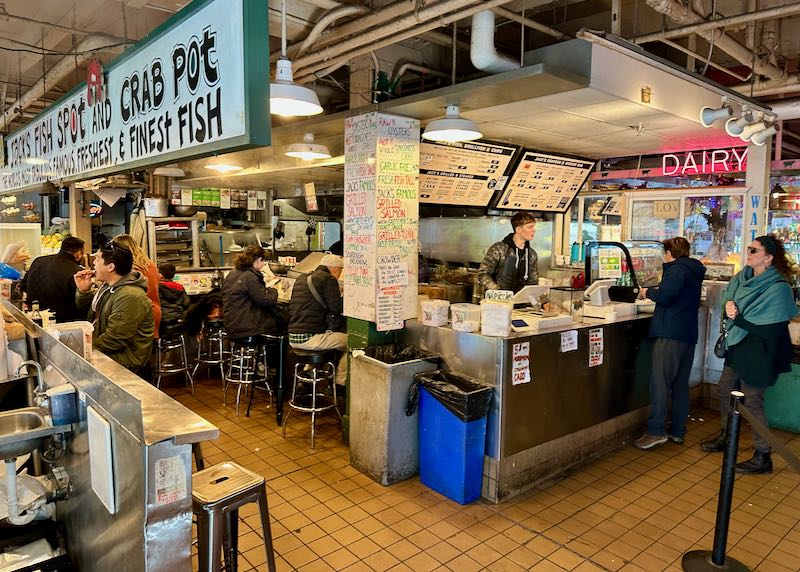
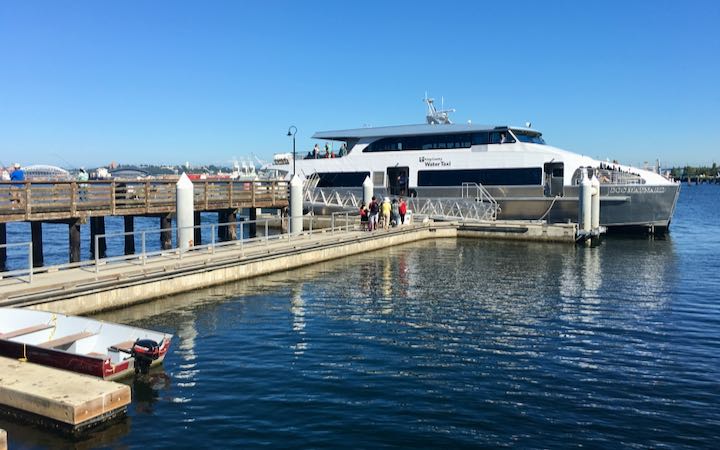
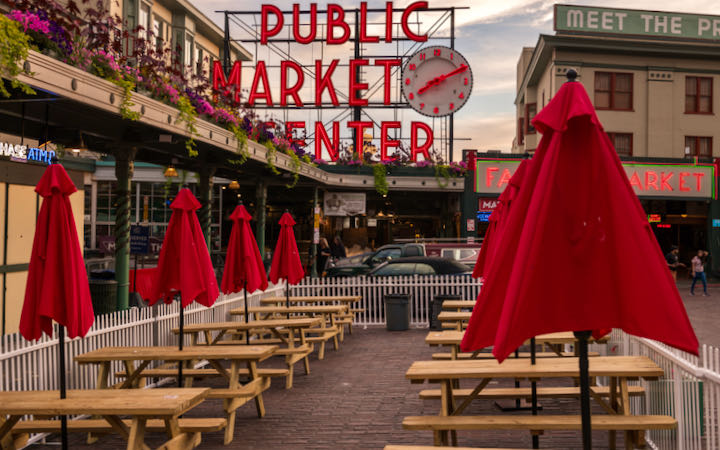
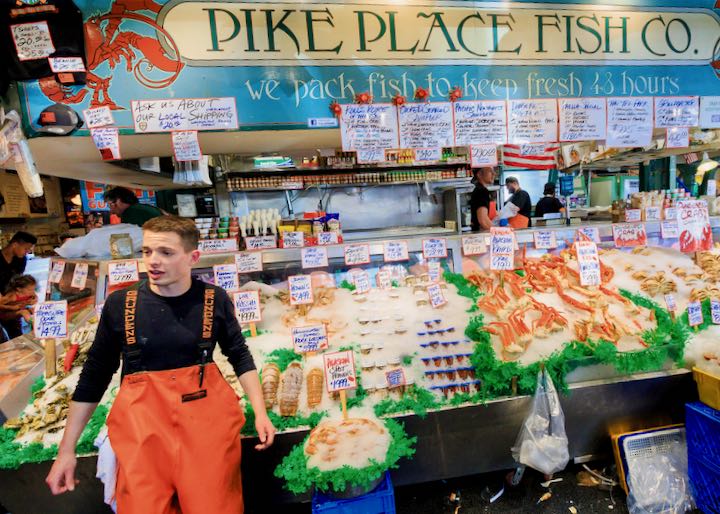
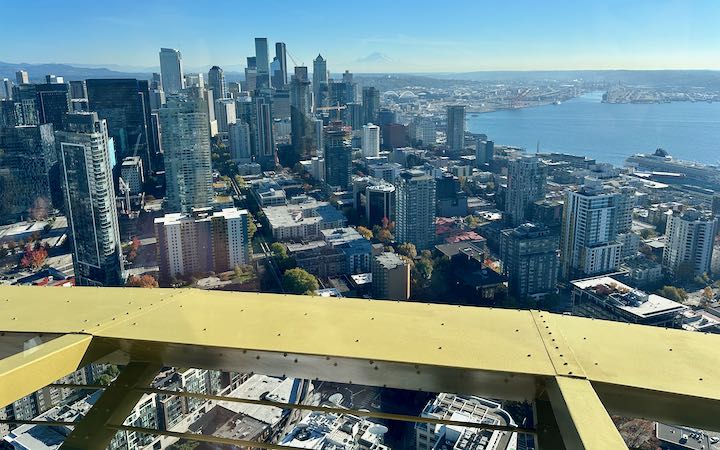
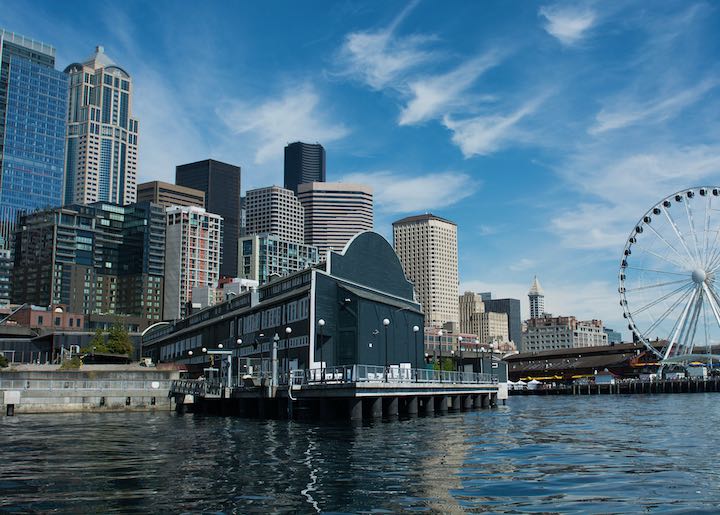
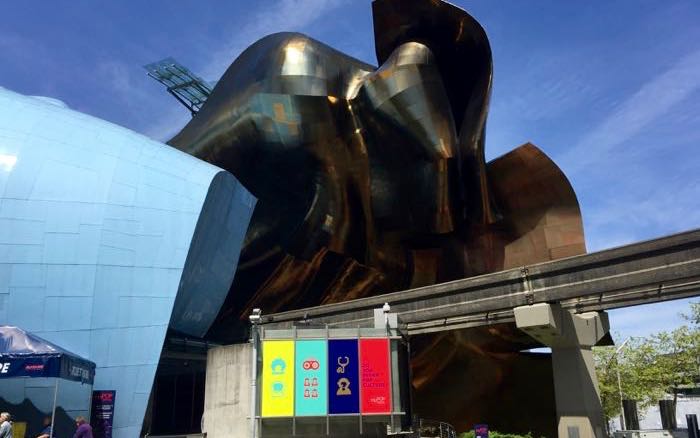
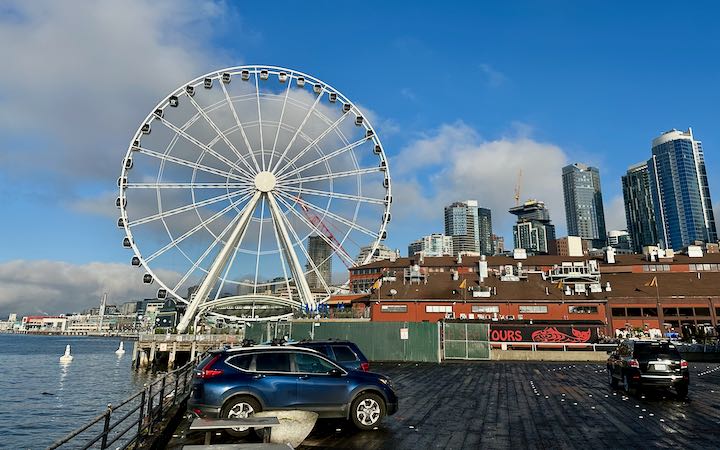
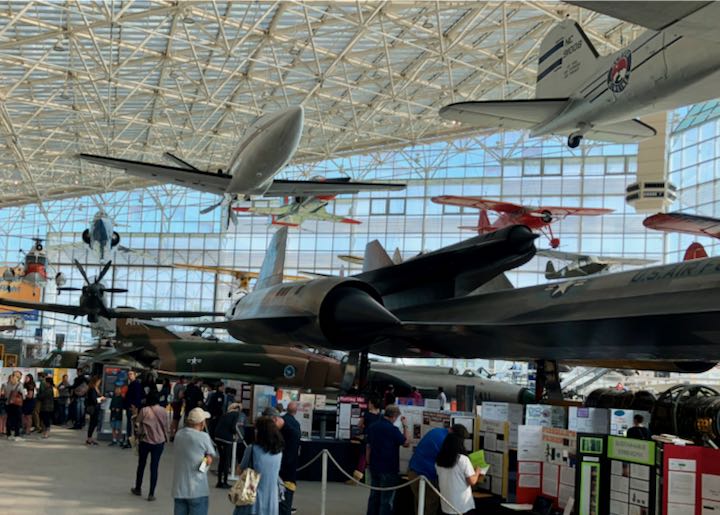
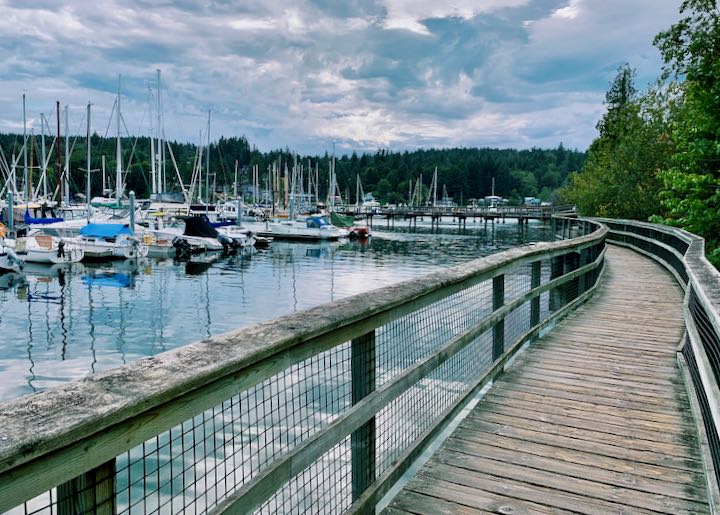
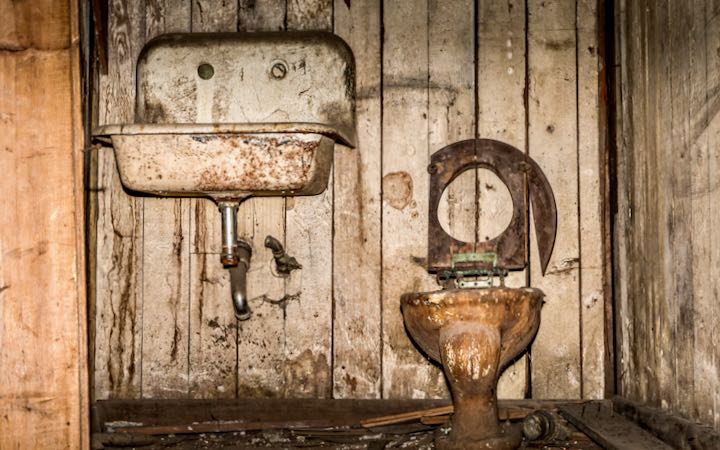
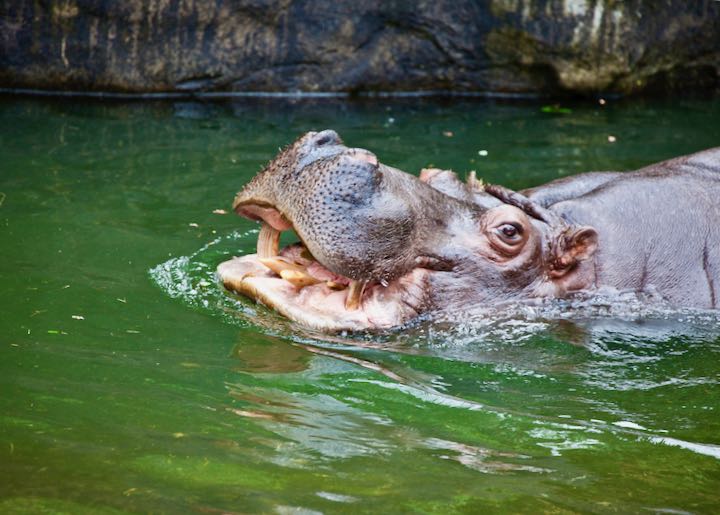
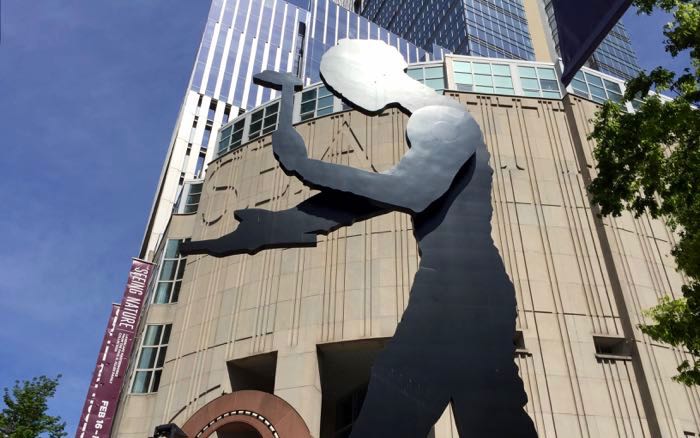
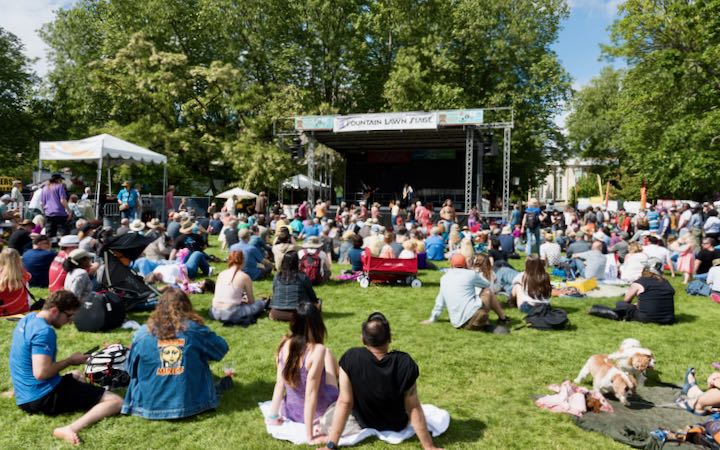
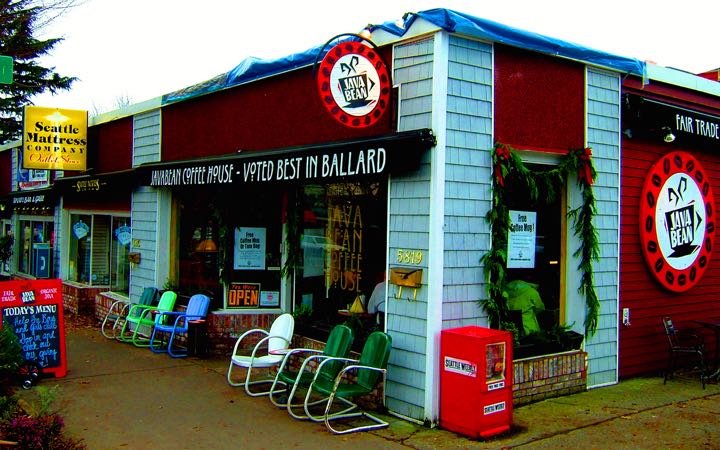
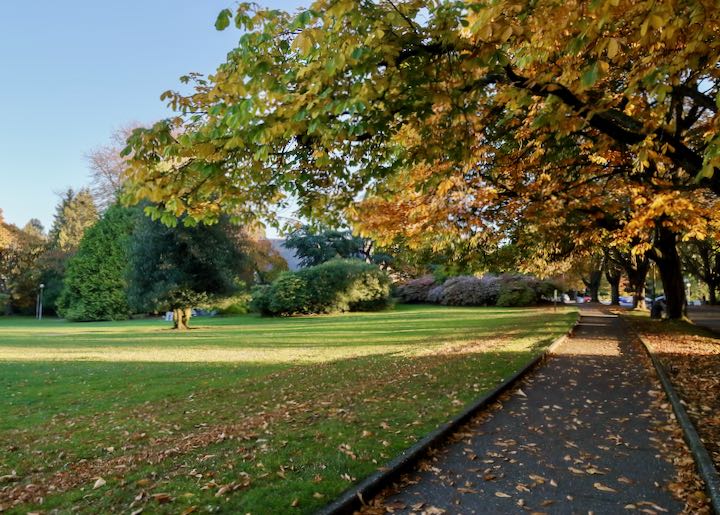
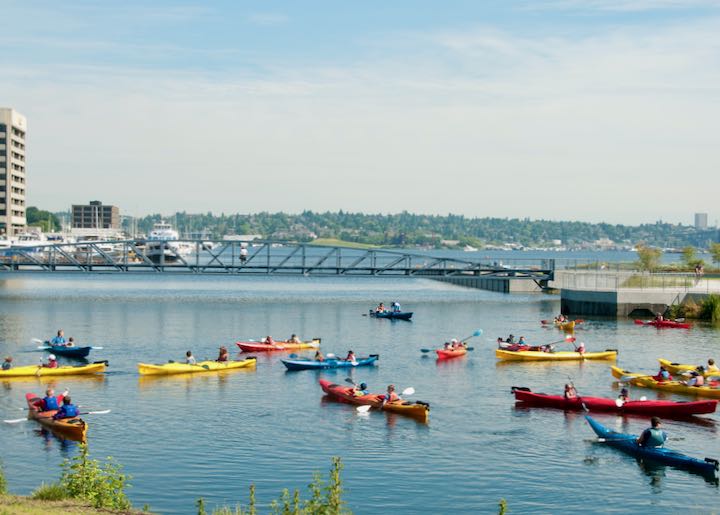
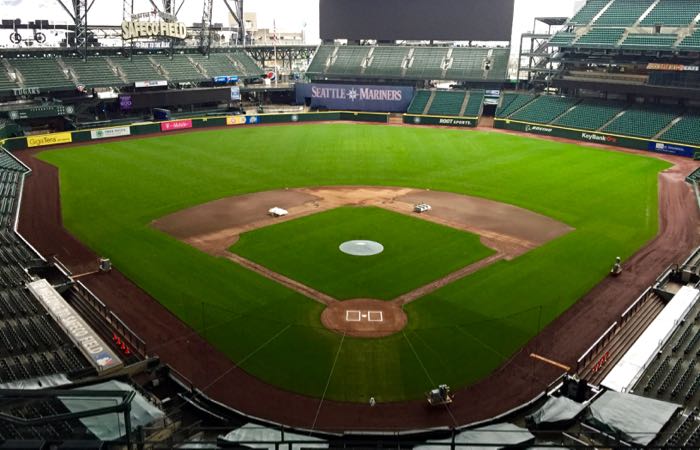
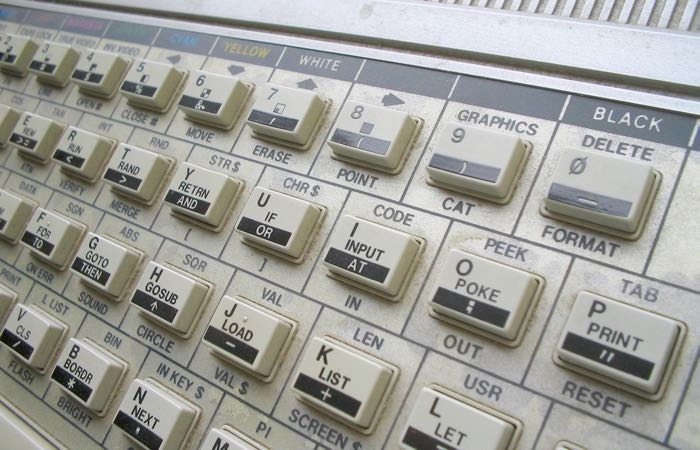
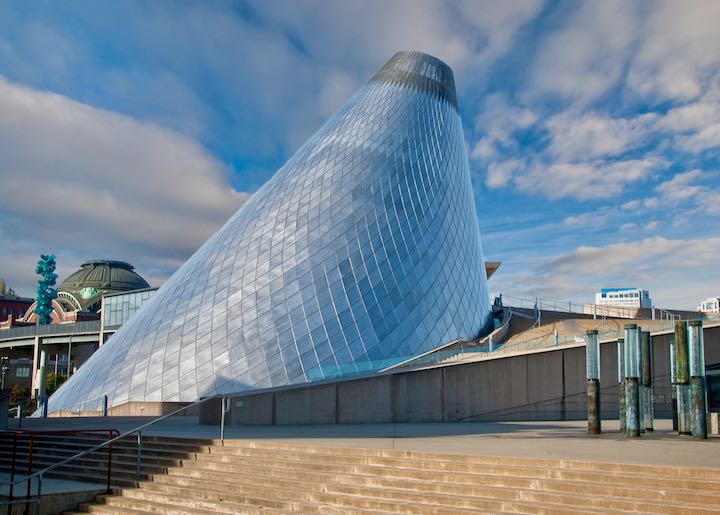
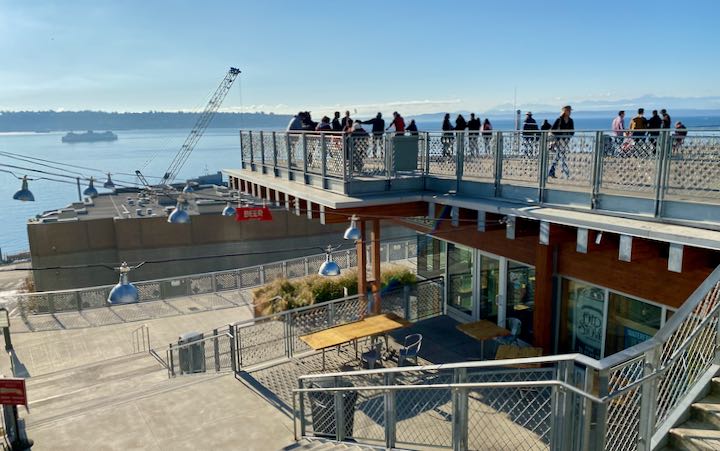
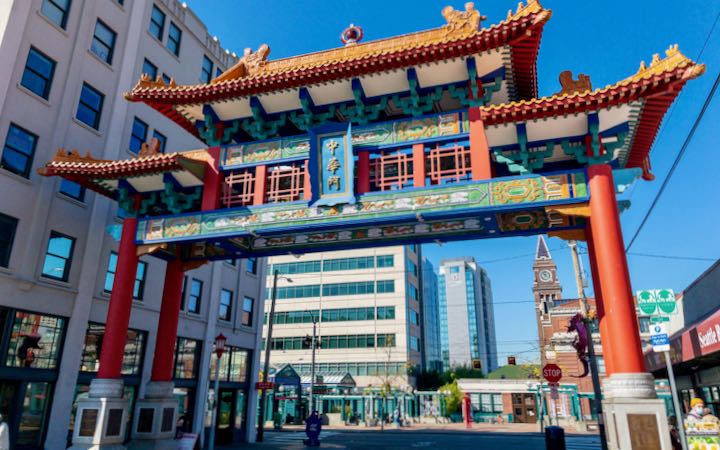
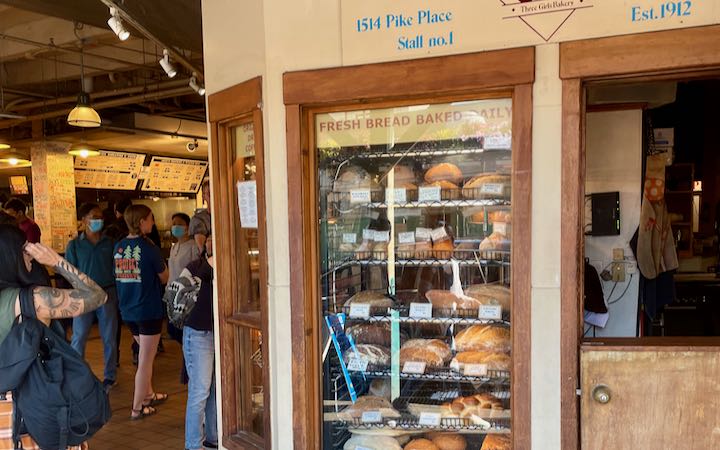
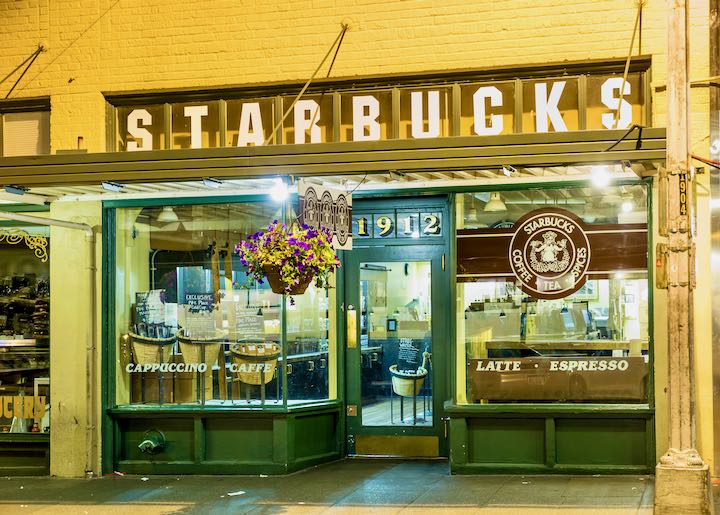
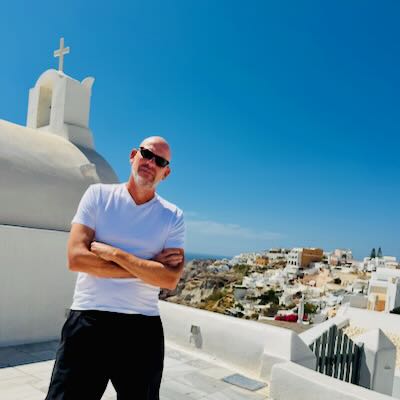 Santorini Dave was started in 2011 when I posted a short guide to visiting Santorini with kids. Now, my site publishes regularly updated guides to
Santorini Dave was started in 2011 when I posted a short guide to visiting Santorini with kids. Now, my site publishes regularly updated guides to
Great list! I’m planning to visit Seattle soon and this will definitely help me plan my itinerary. Thanks for sharing!
Hello,
First and foremost your website has been so helpful and wonderful. I’m visiting Seattle with my mom for a few days over Labor Day weekend and I have a few lingering questions. I know Bumbershoot will be going on while we are there, would you say its worth getting a ticket and attending? My mother would also really love to do a whale watching tour but I’m not sure which one is the best and if its worth it, what are your thoughts on this? In your comments about the San Juan islands you say plane is easier transportation, but I would assume ferries are also an option. Are the islands worth it, and doable for a day trip if we do not have a car?
Any advise would be greatly, greatly appreciated. Thank you for your time and effort.
-Tatiana
Bumbershoot has long been the city’s biggest music festival, and the crowds (and ticket prices) only grown over the years. It caters to a young demographic, so check out the lineup – if you can’t find a band you’re dying to see (and are willing to wade through the masses to get to), I’d skip it. At over $120 a ticket for general admission, it’s too expensive and too much of a hassle otherwise. *Do keep in mind that all Seattle Center attractions (including the Space Needle, Chihuly Museum, Science Center, and Museum of Popular Culture) are open and accessible during Bumbershoot without purchasing festival admission – they’ll just be a bit harder to get to.
The reason I say that a float plane is easier transportation to the San Juan Islands than ferries is that the WA State Ferries to the San Juans are located a couple of hours north of Seattle, not downtown; so getting there can be difficult without a car. The easiest way to do a San Juans whale watching trip without access to a car is to take the Victoria Clipper. Clipper Vacations runs a one day whale watching tour out of the downtown Seattle waterfront, which also includes time for lunch in Friday Harbor on San Juan Island. Kenmore Air runs a combo float plane/whale watching San Juans day trip from Seattle, as well – it’s more expensive, but the added expense might be worth it if you’re concerned about seasickness or if the novelty of the float plane appeals.
The San Juans are great, and think any time up there is well spent. But if you’re on a tight schedule and want to get out on the water without devoting an entire day to the cause, consider a day trip to Bainbridge Island instead.
Hello, and great website! Very helpful!
I’ll be visiting your city this summer, in early August. How can I expect the weather to be? Hot? Also, we’ve heard great things about the islands around Seattle, specifically Bainbridge and San Juan Island. Can either of these make a good day trip? We won’t have a car, so would be relying on public or private transit companies and ferries. Thanks!
Lucia
Bainbridge Island is very easy to get to from downtown Seattle – the ferry departs from Coleman Dock right on the downtown waterfront. Once on the island, it’s a short walk into the harbor town of Winslow, where you’ll find cute shops and restaurants, as well as great little art and history museums. You can even rent kayaks in town to paddle around island. If you head to Bainbridge, time your ferry trip back around sunset – the incoming view of the Seattle skyline can’t be beat.
The San Juan Islands are absolutely stunning in the summer time, but much farther from the city, and harder to get to. If you’re willing to take a seaplane or the high-speed Victoria Clipper ferry, however, a day trip is still possible. Both of these companies offer packages that include excursions like whale watching and kayaking.
As far as August weather goes, expect highs in the upper 70s to low 80s and lots of sun. You’ll want to pack layers, though, the region cools off at night and even the warmest days can feel downright chilly if you’re on the water.
We are in town next week and would like to do a seaplane trip any suggestions?
Cheryl
Kenmore Air is Seattle’s best established and most reliable seaplane tour company, located on the south end of Seattle’s Lake Union. For $99/person, you can do a 20-minute narrated tour over Seattle and Elliott Bay. This is a great tour as-is, but also fantastic combined with a Seattle city or Woodinville wine tasting tour through the Evergreen Escapes tour company.
If you’ve got more time and money to spend, Kenmore Air also offers day trips up to the San Juan Islands and Victoria, BC. These longer trips can be paired with whale watching excursions, biking, fishing, and kayaking trips, or a tour of Victoria’s Butchart gardens. If you’d like to get out on the water in addition to being up in the air, Kenmore’s Sea and Sky package lets you take a seaplane to Victoria, BC and then ride the Victoria Clipper back to Seattle (or vice versa).
Hi there. We will be in Seattle for 3 days at the end of July. We are 2 families with 4 teenage girls. We’re planning for 2 days in the city, which leaves a day for either whale watching with the Puget Sound Express out of Edmonds or taking a drive/ferry to Whidbey Island and Deception Pass. Do you have any advice?
Why not do both? Instead of the Edmonds trip, you could take a whal tours operating out of Anacortes, which is a mere 15-minute drive from Deception Pass. Island Adventures offers a 4pm sailing, which would give you more than enough time to stop for lunch on Whidbey Island on the way up. (I recommend Prima Bistro, Useless Bay Coffee Company, or the Village Pizzeria in Langley.) Or if you’re up for it, take a three hour kayak excursion out of Anacortes – Anacortes Kayak Tours offers late day trips, where you’ll see seals and porpoises, and maybe even orca whales.
I’m considering doing a Savor Seattle Pike Place Market food tour. Is it worth it, or do you feel like it’s better to just stroll around the market and munch at will? Is it good for avoiding lines? We will be there on a weekend in July.
Taking a food tour is by no means necessary to enjoy Pike Place Market, but I do recommend it. Not only will you have a guide to point you to some of the Market’s most dependable favorites and hidden gems, but you’ll also get to meet the vendors/producers that make and sell them, and learn about the market’s history along the way. And taking a tour can be especially helpful in July, when dense Pike Place crowds make the Market tricky to navigate.
If the idea of a food tour appeals to you, don’t limit yourself to the Market – From gourmet restaurant tours to tours combined with cooking classes, there are lots of opportunities to take a guided jump into the Seattle food scene. Along with Savor, some other food tour companies I recommend are Eat Seattle, and Show Me Seattle.
Thank you for this resource, it is extremely well written and very useful.
Would you happen to know any businesses that offer car rental? Our group are all under 24 and do not have a credit card. As a result, we’re finding it difficult to organise a car for our time in Seattle.
Omair Hussain
It’ll be difficult, if not impossible to rent one if you’re under 25 and without a credit card. The best place to start is rentalcars.com which will allow you to search for cars from all possible car rental companies.
Dollar allows rental without a credit card, though only if you apply (and are approved) for their Cash Deposit ID Card – though frankly this seems like more hassle than you want. You should also look into car sharing services, like Car2Go and Zipcar – though these may require a credit card as well.
Luckily, Seattle is a relatively easy city to get around in without a car. The Light Rail will get you from the airport into downtown, and you can use light rail, buses, the streetcar, and the monorail to get around the city. An ORCA card will cover all public transit payments except the Monorail. Cabs are also a good option for getting around town, and will likely be cheaper than renting (and parking) a car for the whole of your trip.
Good luck!
My husband and I are taking our first ever cruise (yay!) to Alaska in a few weeks. We are so excited! We will have a few hours to kill before embarking our ship at Pier 66 and I was wondering if you think that would be enough time to wander/ grab a bite at Pike Place Market? Also, any ideas on what to do with our luggage in the meantime, so we don’t have to lug it around? Thanks!
Lisa
As long as your flight into SeaTac is on time, you should have just enough time for a quick bite at the Market. Take a cab/Uber to Pier 66 to stow your stuff (they terminal offers pre-and post-cruise luggage storage, though you should check with your cruise line in advance), then head across the street and take the Lenora Street walk uphill a few blocks, take a right on Western, a left on Virginia, and you’re there. It’ll take about ten minutes, but if you’re not up for the hills, a cab/Uber will be quick and cheap.
My teenage daughters (16 &19) and I are traveling to Seattle in the middle of June to visit UW and explore part of Washington. We are staying in downtown Seattle for two nights before heading up to the Olympic Peninsula and plan on using public transportation until we leave Seattle. I rented a cabin at Crescent Lake and am wondering about which way to get there? By ferry through Bainbridge or drive over and up the coast? Unfortunately our travel day is Friday which I understand is a tough day to be on the road. We are only at the cabin for one night before taking a ferry to Victoria.
Thanks
Kelly M.
Definitely take the ferry to Bainbridge and go from there. You’re right that Fridays can be a hassle for travelers, but in mid-June we still won’t have reached the height of the summer weekending season, and any ferry wait you’ll encounter at Colman dock is most likely going to be better than slogging through Friday traffic on the interstate (which can be bad at any time of the year). Plus, taking the ferry is just more fun.
That said, the earlier you can get on the road, the better – catching a pre-noon boat would be ideal, as it would give you ample time to get up to and explore the Peninsula a bit before leaving for Victoria the next day.
We are visiting Seattle in Sept and are considering buying the City Pass.
1. Is it worth buying?
2. Should we buy it before we travel or is it easy to purchase when we arrive?
D.
1. CityPASS Seattle is a fantastic way to save money, but only if you plan on visiting many of the covered attractions. As of right now, one $74 CityPASS will get you admission to five Seattle attractions: The Space Needle, The Seattle Aquarium, an Argosy Harbor Tour, Experience Music Project or Woodland Park Zoo, and Chihuly Garden and Glass or Pacific Science Center. Adult admission to any of these spots averages around $25, so if you plan on hitting four or more of them, this will save you at least $25. If you’re planning to go to three, you’ll want to look up the admission prices on the attraction websites and compare.** If you’re only going to be visiting one or two, it’s not worth it.
2. CityPASS can be purchased at any of the attractions covered, so it’ll be easy to buy when you get here. For those who like to plan ahead, it’s also available to purchase in advance.
**Keep in mind that the CityPASS admission sometimes includes additional perks you might not end up using. For example, CityPASS admission to the Space Needle covers two visits: one day, one night. If you’ll only be visiting once, you’ll want to take that into account when you’re doing your comparison.
Two of my friends and I are visiting Seattle in July and looking to get some hiking in. We’ll be staying downtown, near the ferry terminal, and will have one entire day for this trip. We don’t mind getting up early or driving home in the dark, and can pack as many meals and snacks as are necessary.
1. Do you recommend Mount Rainier or Olympic National Park in July?
2. Is either of these better for a day trip?
3. Can we take a ferry to Olympic National Park?
Thanks much,
Monte
1. Both Mount Rainier and Olympic National Park will be great to visit in July – you should have access to most trails and the wildflowers will be in bloom. Avoid visiting either park over the weekend if you’re interested in avoiding crowds.
2. Mount Rainier is closer, which would give you more time to explore. Since you’re willing to leave early in the morning, though, you could get easily get up to Olympic by mid-late morning and hit Hurricane Ridge and Lake Crescent before heading back to the city. Here’s some info on Mount Rainier day hikes, Olympic National Park, and Hurricane Ridge hiking trails.
3. There’s no ferry that will take you directly to the park, but since you will be staying in downtown Seattle, you’d want to take the ferry to Bainbridge Island and drive from there to Port Angeles. The trip will take about three hours, unless you’re making it on over the weekend, in which case prepare for long ferry waits and traffic.
My understanding is that I shouldn’t have to rent a car if I’m staying downtown, but I’m confused about all of the public transportation options in Seattle.
1. What are the differences between the light rail, trolley, monorail, and bus routes? Do they all go the same places?
2. Which one is best/most convenient to use to get around town?
3. Which one is cheapest?
1. Link light rail is a train system that runs from SeaTac Airport to the University of Washington in Northeast Seattle. It has station stops at the sports stadiums, the International district, Pioneer Square, downtown, and Capitol Hill. The trolley (or Seattle Street Car) has two different lines, one running from downtown to South Lake Union, and one from Pioneer Square to Capitol Hill, via the International District. The Monorail runs from Westlake Center in downtown Seattle to the base of the Space Needle in Seattle Center. Buses go everywhere.
2. You’ll likely want to use a combination of all of these options to get around Seattle, and it’s easy to do so. Payment is coordinated between transit lines through an Orca card – you can use it for just about all Seattle public transit, including ferries. With an Orca card, you won’t have to worry about having exact change, and transfers are free within a certain time frame. The one exception to this is the Monorail, which is privately owned and you’ll have to pay for separately. You can pre-load your Orca card with funds use like cash, or with a regional day pass, good for unlimited rides under $3.
3. They all cost about the same: $2.25-3.00 adult fare, depending on how far and when you’re traveling. There are discounts for seniors and youths, and kids 5 and under ride free (4 and under on the Monorail). Having an Orca card will save you money, though; you can use it to transfer across transit lines for free – without one, you’ll pay multiple fares.
Hello,
My wife is what you might generously call a Starbucks “ultra-fan.” (On a not so nice day, you might call her a nut.) She’s at our local drive-through at least once a day and prefers working from their cafes to working from home any day of the week.
I’m surprising her with a trip to Seattle for her birthday this fall. I know about the original Starbucks that’s in Pike’s Market. Are there any other great Starbucks sites we can visit? Is it possible to tour Starbucks Headquarters?
Thanks.
Unless you know someone who works there, touring Starbucks Headquarters is not a possibility. However, you can visit the Starbucks in the building’s lobby, and their Coffeegear Store (located on the 8th floor of HQ) sells specialty branded merchandise that’s not available anywhere else and is open to the public as well as Starbucks employees.
Starbucks Reserve Roastery and Tasting Room is located in Seattle’s Capitol Hill neighborhood, a quick drive/bus/Uber trip from downtown (or an easy walk if you’re staying near the Seattle Convention Centers.) It’s a massive operation with multiple specialty blends and brew methods to try, a fantastic pizza restaurant, and of course loads of signature branded merchandise to buy.
Seattle is also home to many “Starbucks Evenings” locations. In addition to coffee and tea, they serve wine, craft beer, and small-plate savory dishes like truffle mac-n-cheese. The company has been expanding these stores like crazy over the past few years, but they’re still not available in many markets, and if you don’t have any near where you live, it might be worth a stop. You can find more information, and click through to a location map here.
While it’s not the world’s highest (that’s in Squaw Valley, CA), the view from the 40th floor Starbucks in Seattle’s Columbia tower is tough to beat. And it’s free – adult admission to the Columbia Tower Observatory on the building’s 72nd floor will run you $15.
For more information about these and other cool Seattle Starbucks locations, head over to this extensive blog post on the subject.
Hi,
My family (me, my wife, and two kids, ages 7 and 10) and I are flying in from Minneapolis next month for a long weekend. We are staying at the Maxwell near Seattle Center.
I have several questions if you could lend some advice:
1) We plan on taking the light rail into town from the airport. Where do you recommend getting off? Transfer to the monorail at any point? We don’t mind walking a bit if need be – kids are good at pulling their own bags.
2) Is there a specific restaurant you recommend near our hotel that’s good for (not super picky) kids and parents who like to eat good food?
3) We are planning to visit the EMP, Chihuly, and the Space Needle. Too ambitious to do all in one day, with kids?
4) We have tickets to the 1 pm Mariners/Twins game on Sunday, May 29th. Is there anything you highly recommend visiting around Safeco before or after the game?
5) We will also visit Pike’s Market and plan to take the Bainbridge Ferry. Is the ferry relatively close to Pike’s? Once we get to Bainbridge, is there a restaurant that can’t be missed?
6) What’s the best seafood restaurant downtown?
Thanks for your help!
First of all, great choice with the Maxwell – it’s a fantastic spot for families. Now, per your questions:
1. If you’re committed to using the light rail, you’ll want to get off at the Westlake Station stop and go up to the 3rd floor of Westlake Center Mall – that’s where you’ll catch the Monorail. The Monorail will take you to the eastern edge of Seattle Center. From here, it’ll be about six blocks of walking to the hotel.
2. There’s a wood-fired pizza joint, The Rock, right next door to the Maxwell that’s pretty good, as well as great Mediterranean fare at Mashawi, just down the street.
3. Go for it. All three are in the same general location, and the Space Needle is a quick stop, so you should be more than fine. If you’re looking for lunch nearby, there’s a great local food court in the Seattle Center Armory building, just west of the EMP.
4. Historic Pioneer Square is near the stadium district, and is worth a walk through – I’d even do the Underground Tour if you have time. There are great cafes and eateries and it’s free to stop in at the Klondike Gold Rush National Historic Park (actually a small museum, but technically a national park…it’s complicated). If your brood is interested in computers, you might enjoy stopping in at the Living Computer Museum, located two (long) blocks south of Safeco Field on 1st Ave.
5. If you travel south on 1st Ave from Pike Place Market, it’s about 6 blocks to a the ferry terminal pedestrian ramp on Marion Street. On Bainbridge Island, I like Hitchcock Deli and the Harbour Public House, both easy walking distance from the ferry.
6. Great seafood: Jacks’s Fish Spot, Pike Place Chowder, and the Market Grill are all located in Pike Place Market, and Etta’s is just outside. Elliott’s Oyster House is down on the waterfront (and has much more than just oysters, though it has lots of those). Ray’s Boathouse and Cafe are on Shilshole Bay in Ballard, but are well worth the cab fare for the food and the amazing view.
Hi. I saw the previous question about renting a car in Seattle. It was very helpful, thanks. I have a couple of add-on questions to that. I’ve heard great things about Seattle’s hiking/outdoor scene and would like to fit at least one hike into my trip.
1. Are there any hikes in or around the city that I could easily access via bus or train?
2. Are the San Juan Islands too far away for a day trip? Could I get there easily without a car?
3. Ditto Mount Rainier.
I’ll be traveling in July. Thanks!
Mike
Hi Mike!
1. Seattle’s best in-city hike is at Discovery Park in the Magnolia neighborhood. Discovery Park has a 3 mile long loop trail that winds through forest and meadows, with connecting trails down to a beautiful beach. It’s easily accessible from downtown by Metro bus route 33.
2. Because of distance and ferry wait times, the San Juans Islands are not a great day trip option if you’re traveling by car. Flying is a different story. Kenmore Air runs daily sea plane flights betwen Lake Union and the San Juans that are only 45 minutes each way. They’re not cheap, but the views are incredible. Kenmore Air also offers San Juan whale watching, cycling, and kayaking day tours.
3. The easiest way to get out to Mount Rainier without renting a car is to take a tour. Tours Northwest offers a coach-bus style tour of Rainier from late April through early November. Discover Nature tours are more intimate, with small group hiking/snowshoeing excursions that run year-round.
Good luck!
My wife and I will be spending three days in Seattle in early May. We are undecided as to whether we should rent a car. Is it worth it? How easy is it to get around Seattle without a car?
Oscar
Unless you’re planning on spending lots of time outside the downtown area, I would advise against renting a car. Besides the car rental fee, parking downtown can be pretty expensive and difficult to find. The Link light rail train will take you directly from SeaTac airport into downtown – if you’re staying at a hotel, they’ll be happy to tell you which stop is nearest to their location. From there, it’s easy to bus, cab, Uber, or light rail around the city whenever it’s too far (or rainy) to walk.
If you choose not to rent a car, you’ll want to get an Orca card. These are refillable transit payment cards that you can use to pay for bus, light rail, and ferry trips around Puget Sound. They’re easy to use and eliminate any worry about having exact change or keeping track of bus transfers. You can order your Orca card online before your trip, or buy one at the SeaTac light rail station or the downtown transit tunnel.
Link Light Rail website.
King County Metro Bus basics.
King County’s trip planner will help you figure out your transit routes around town.
Orca Card website.